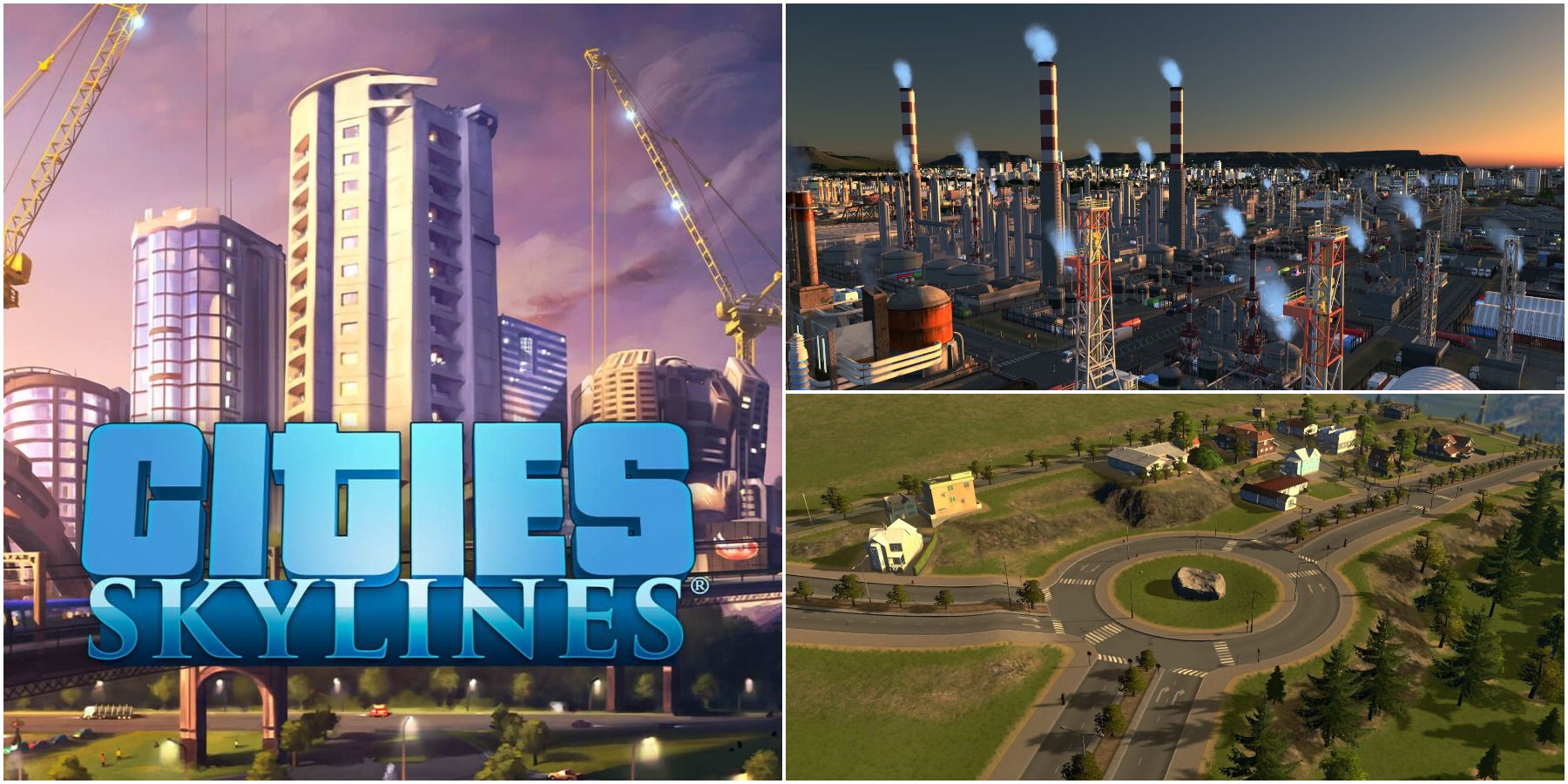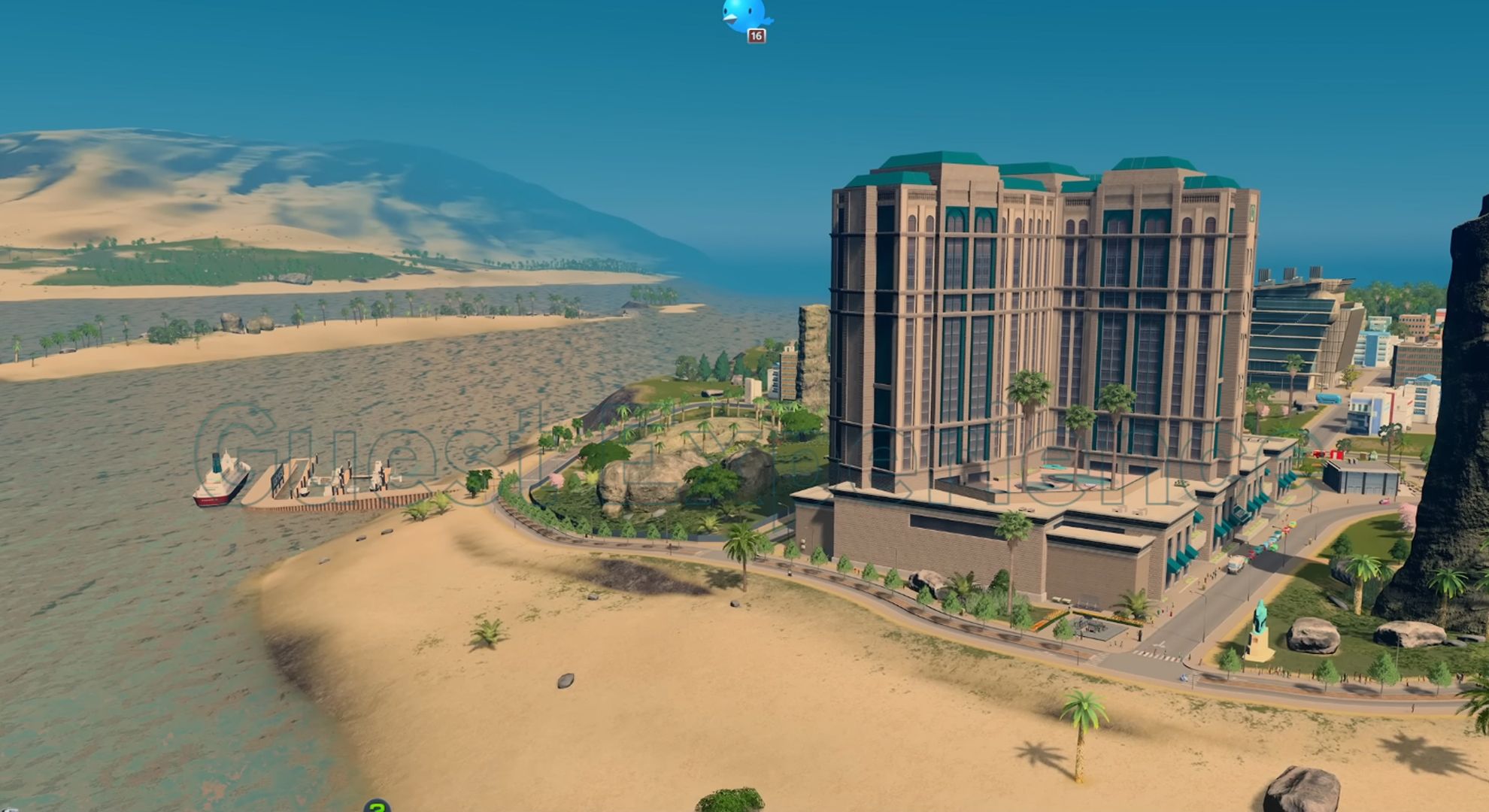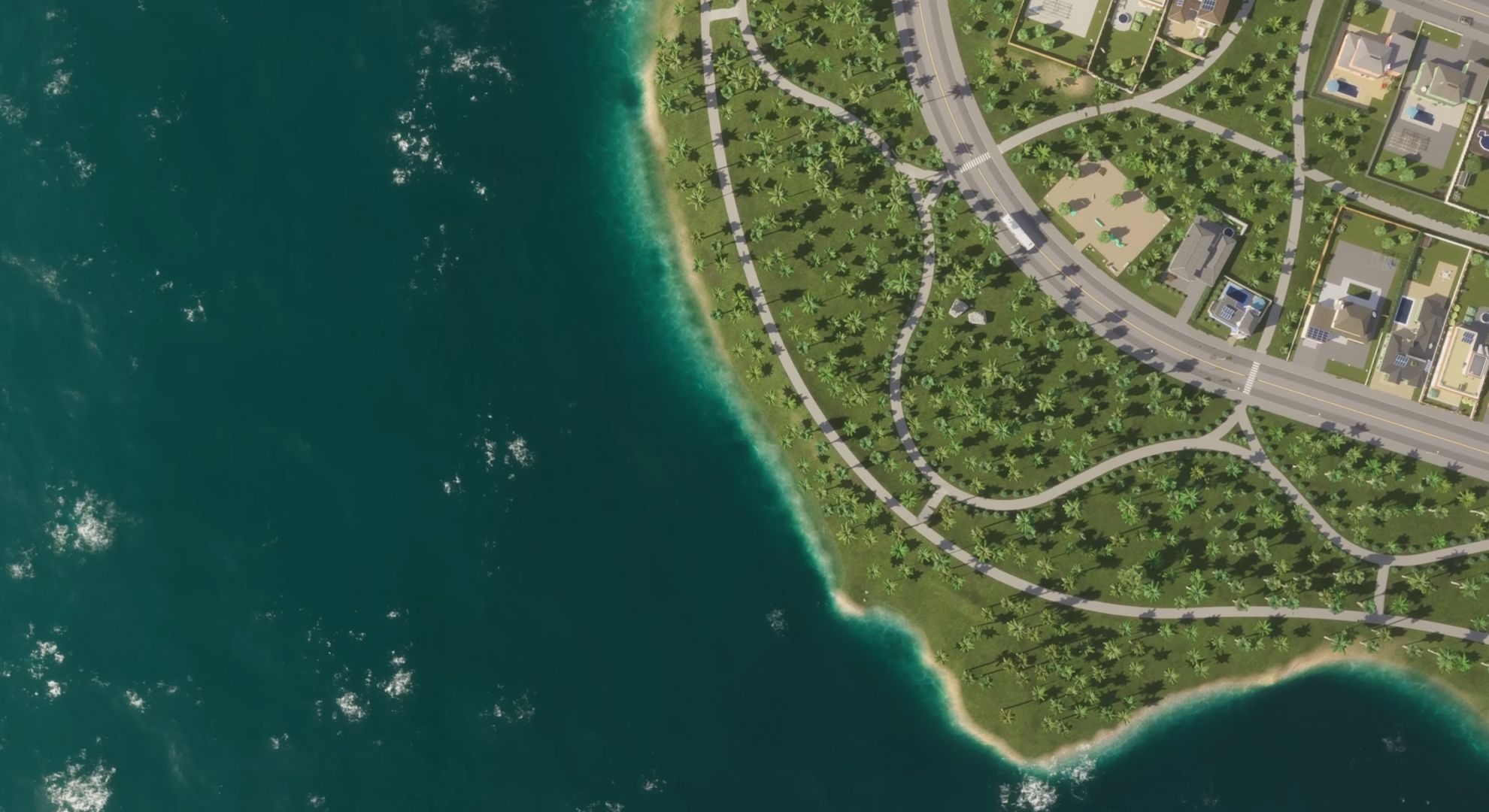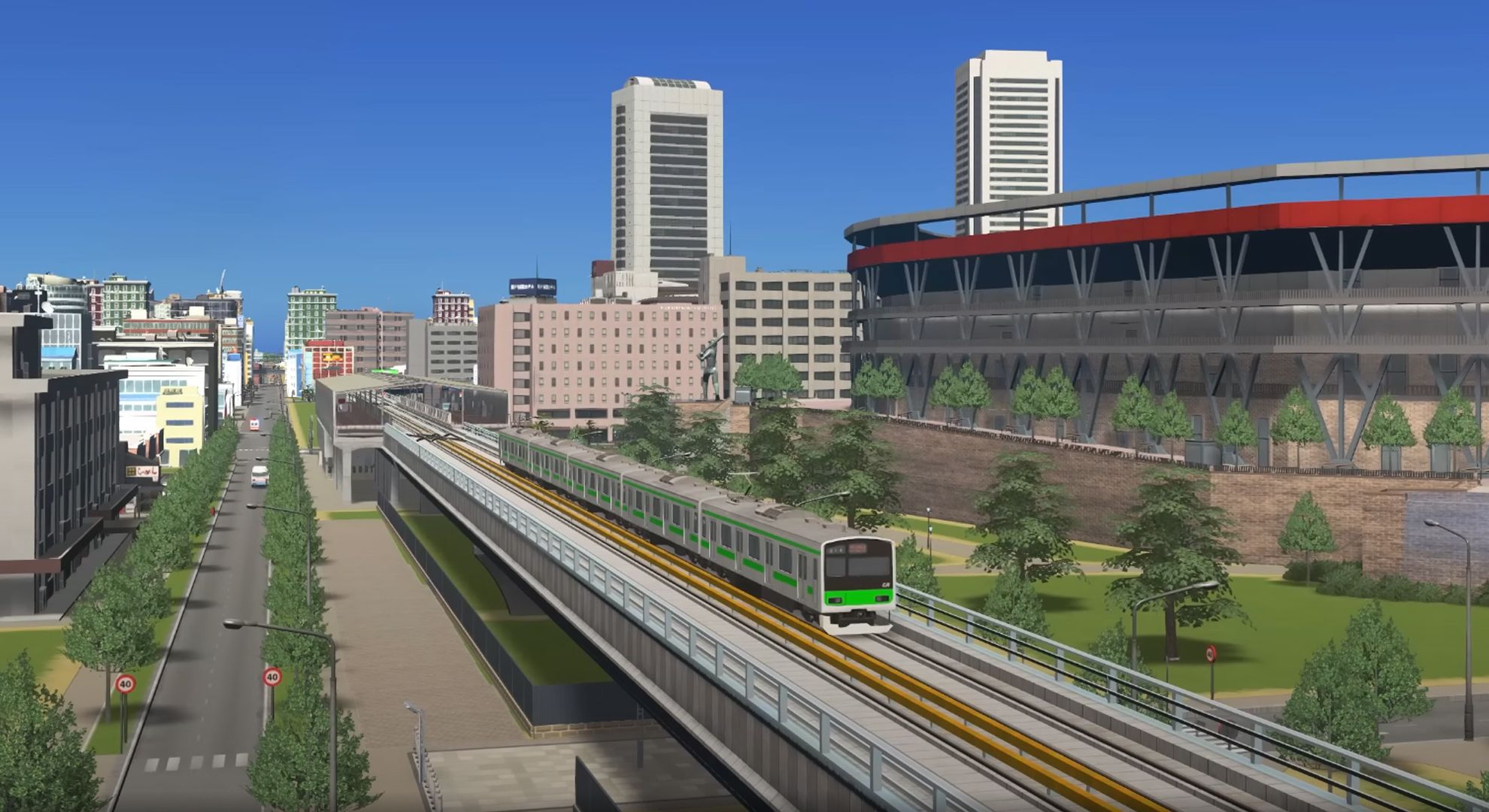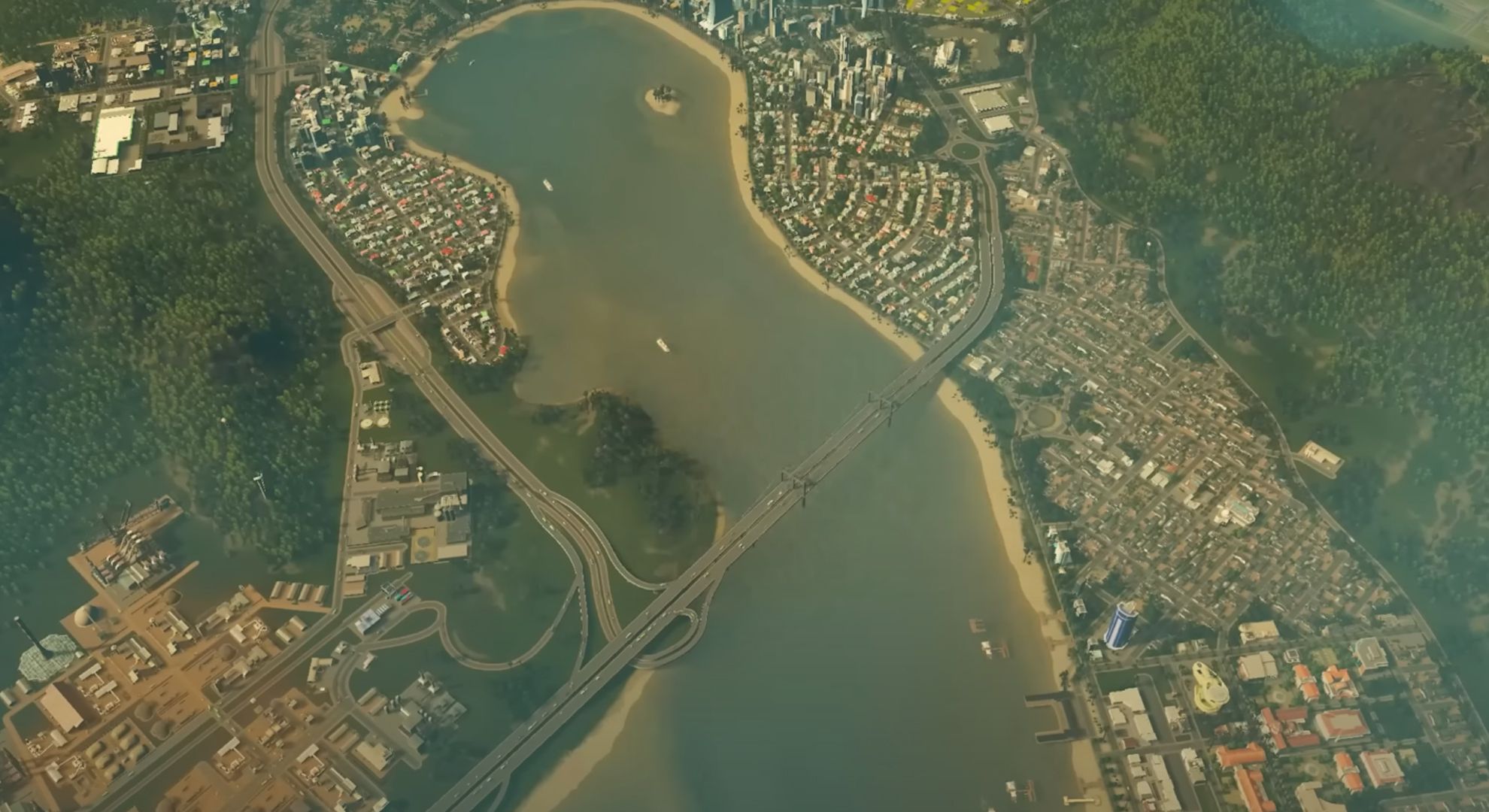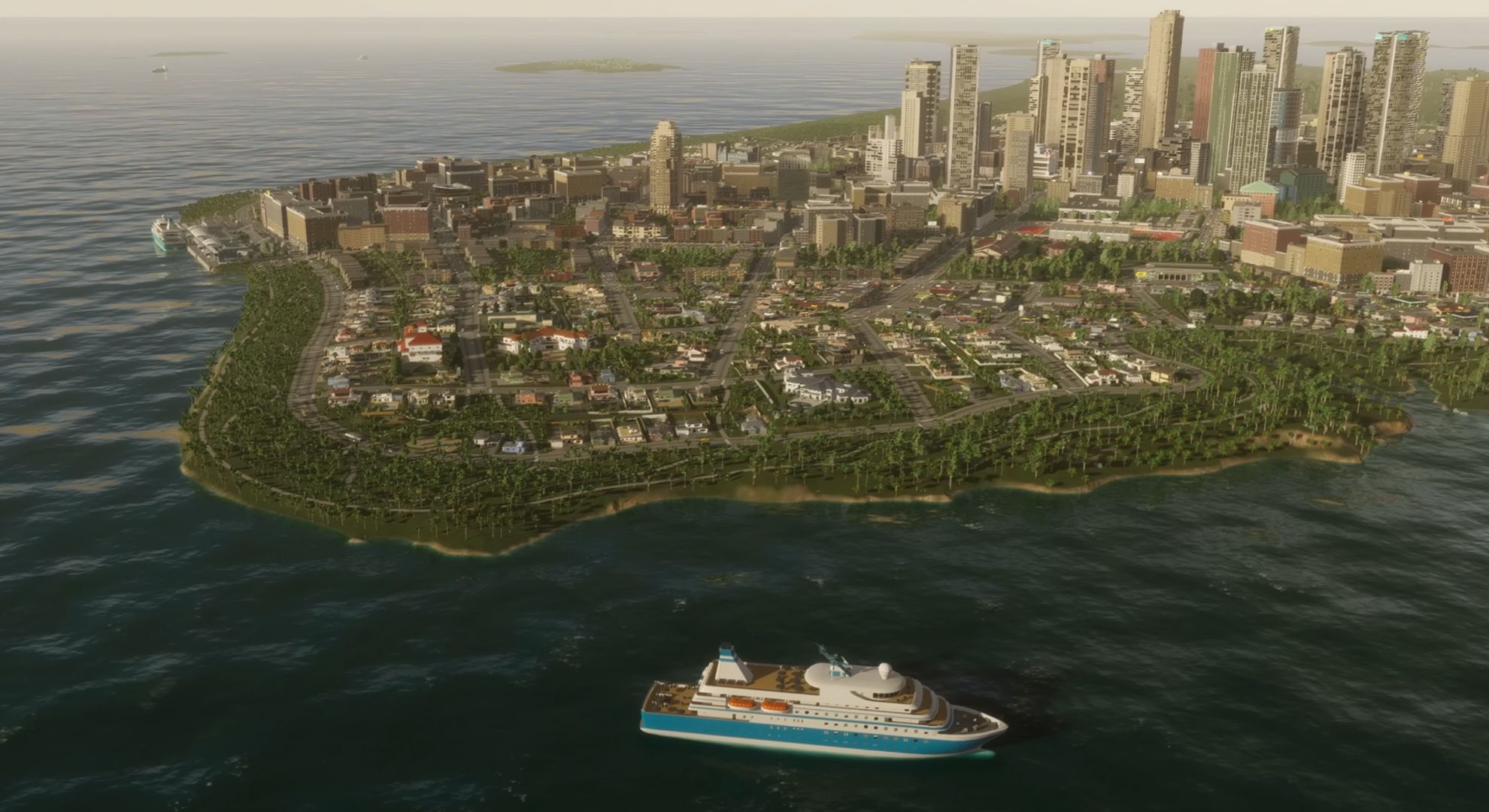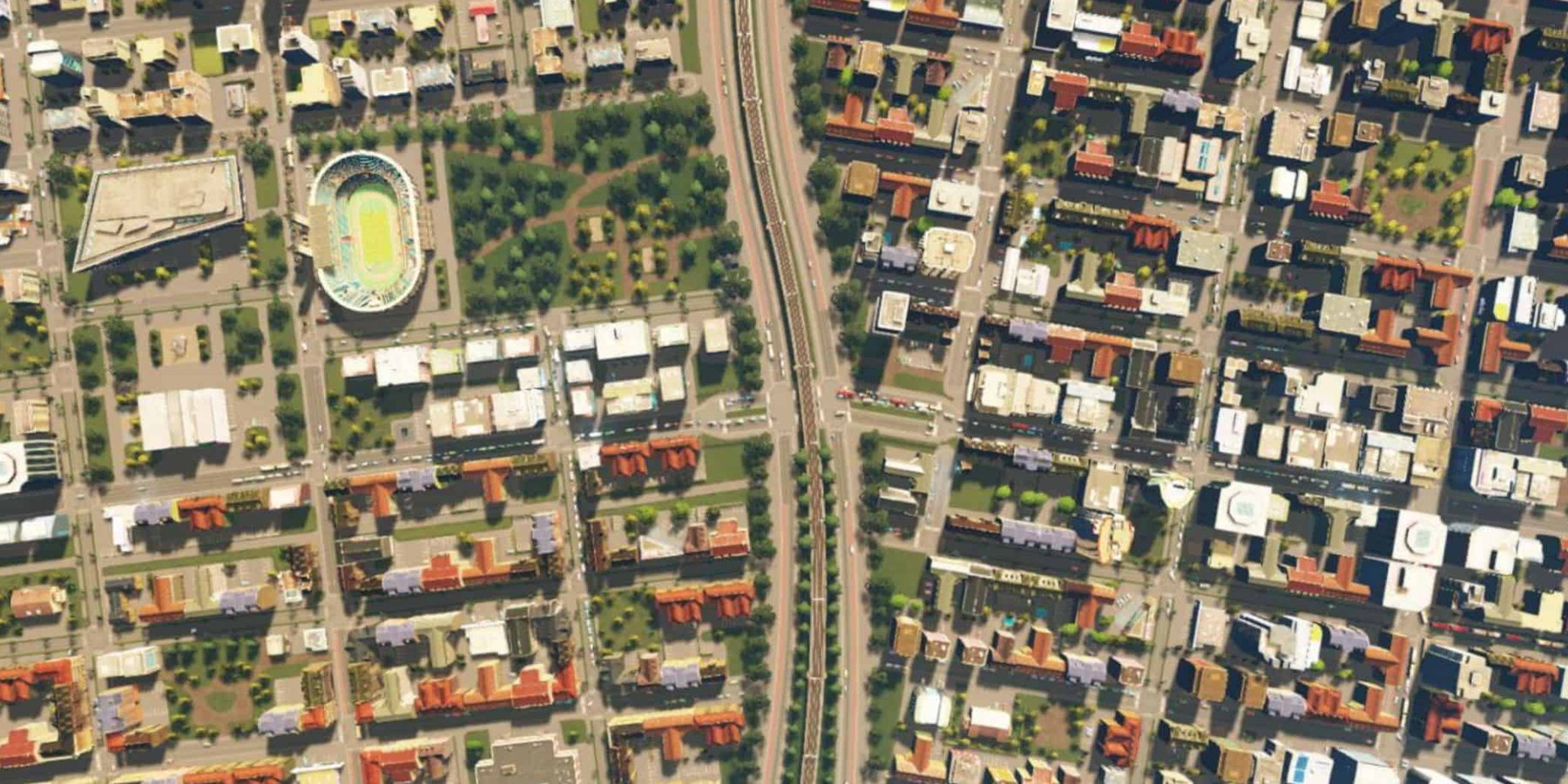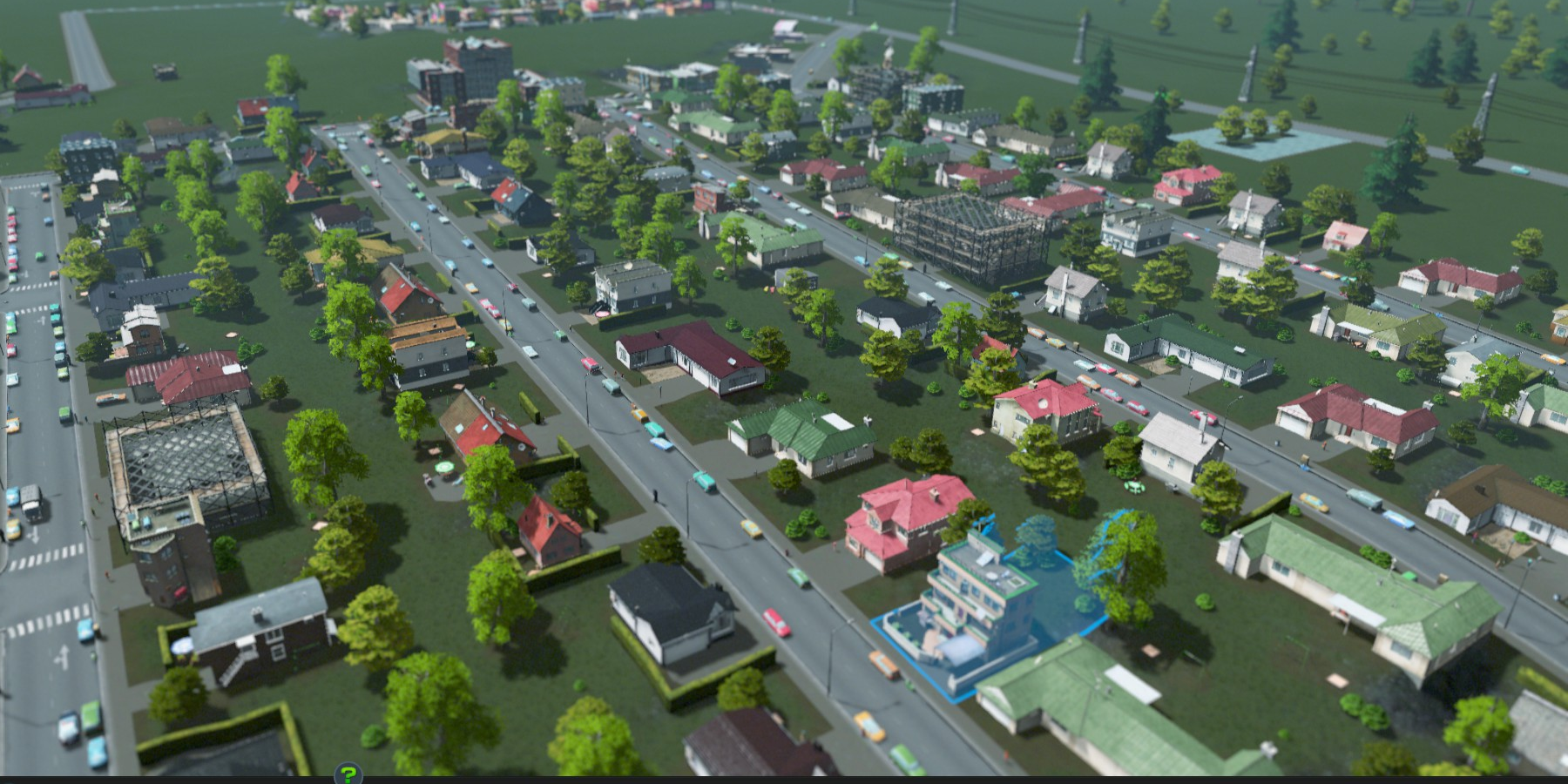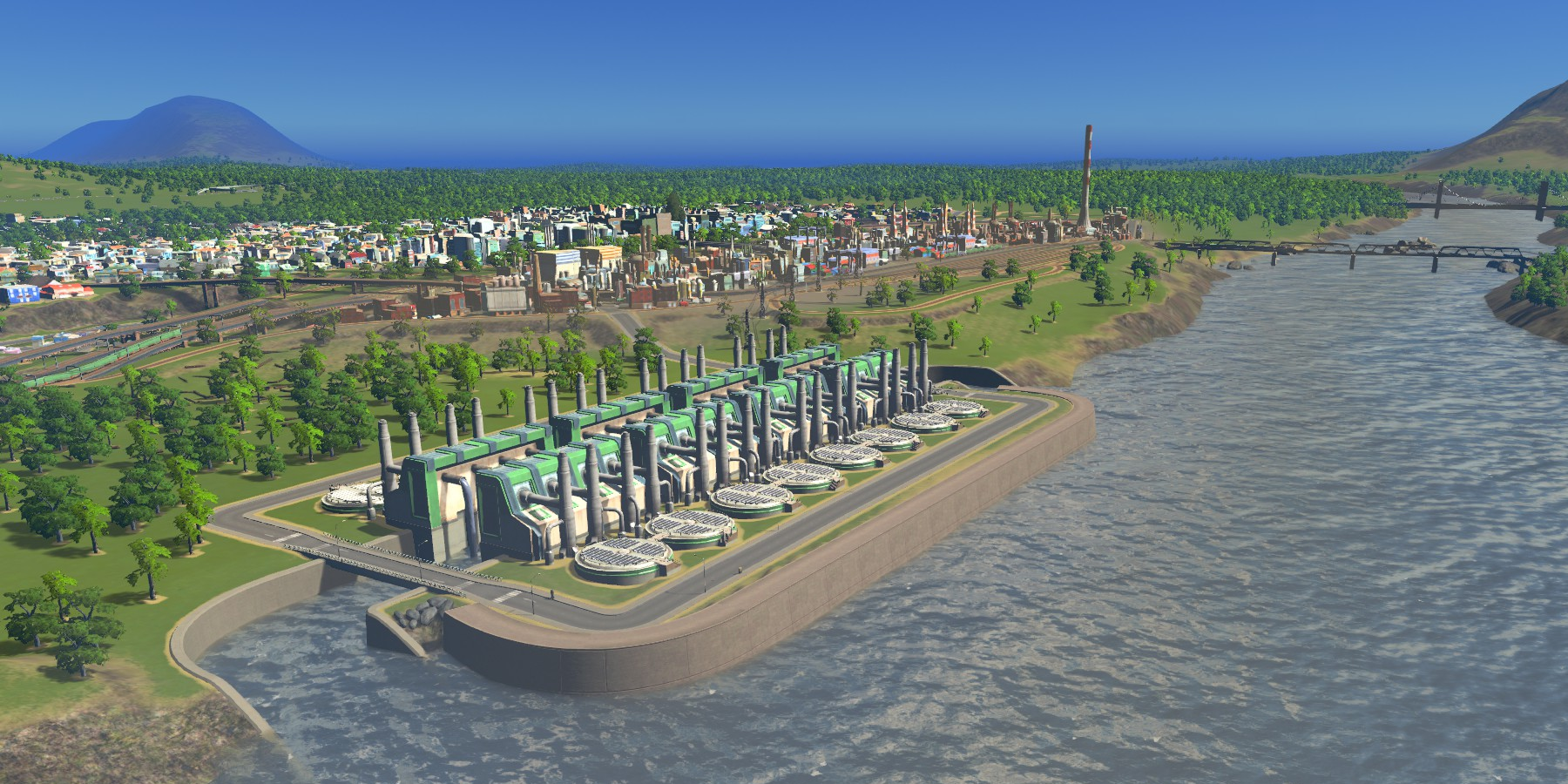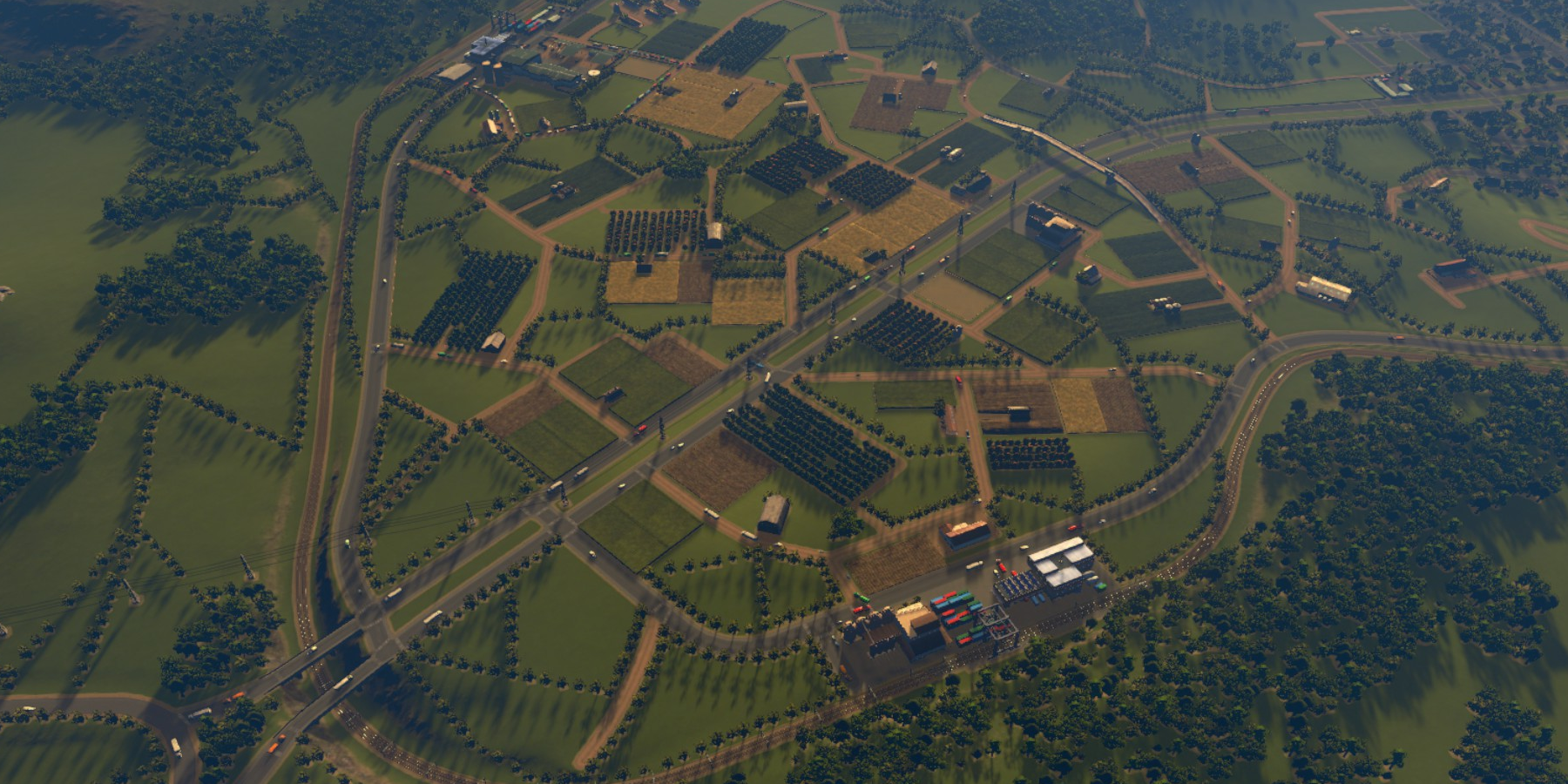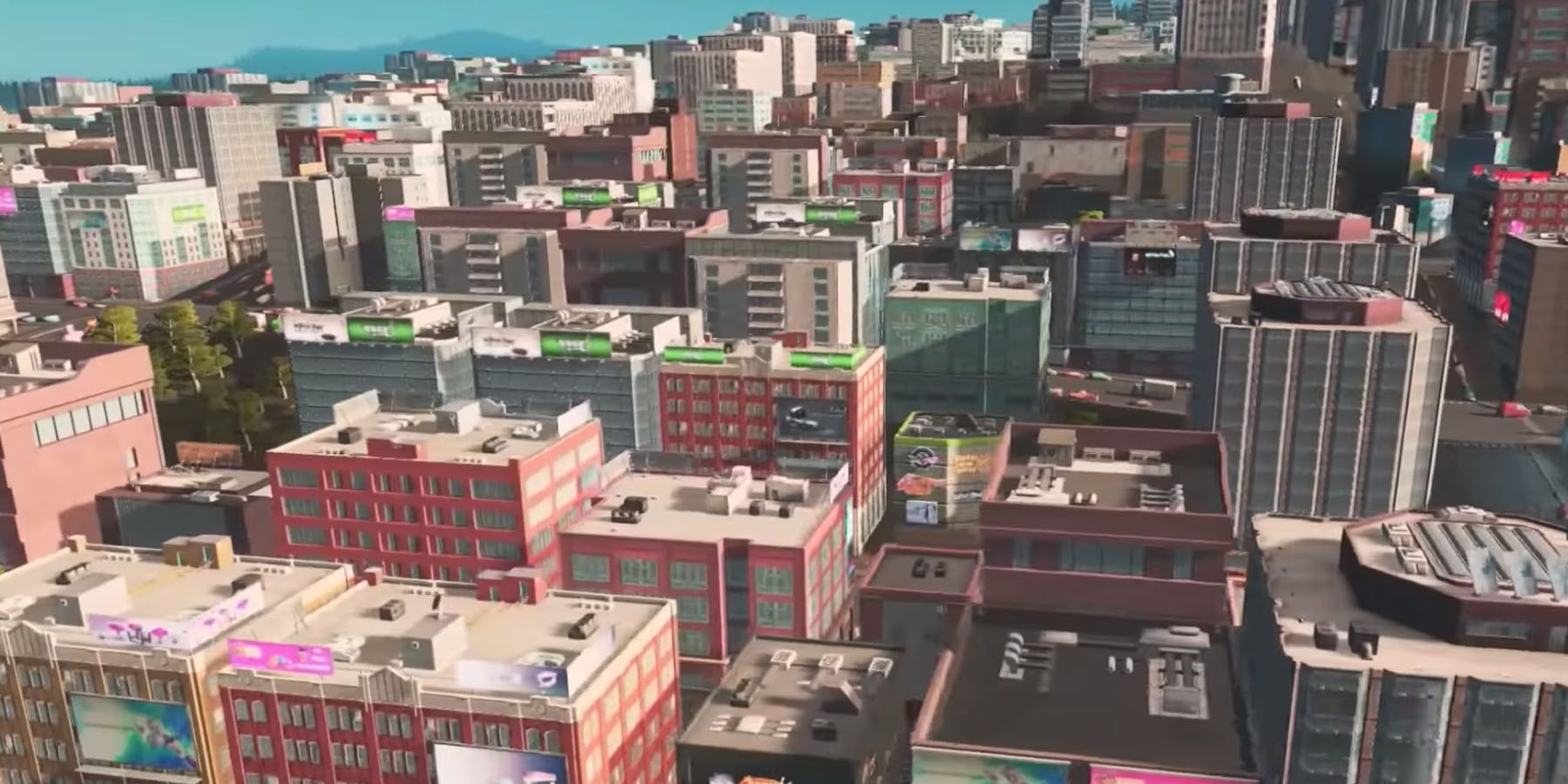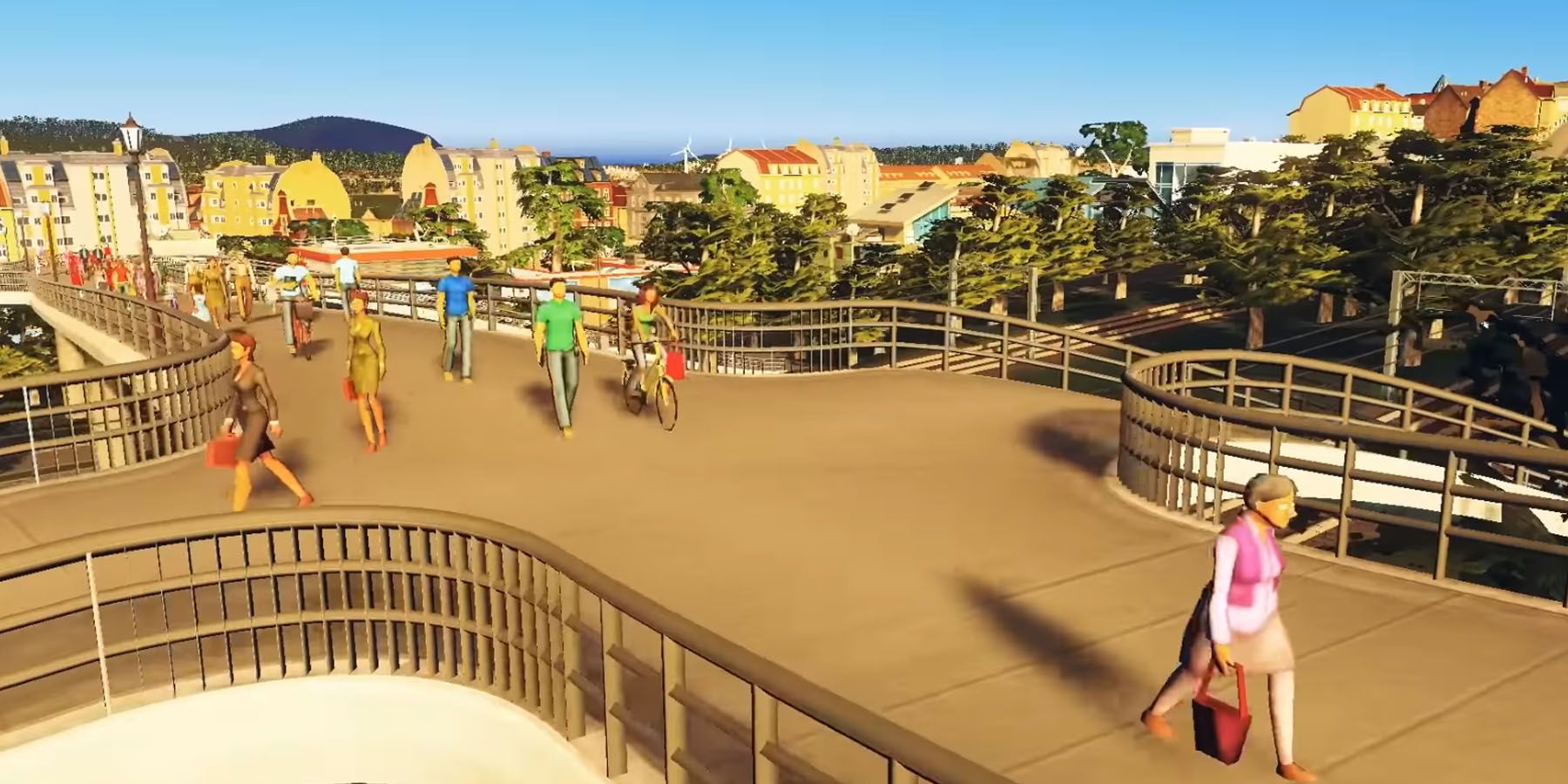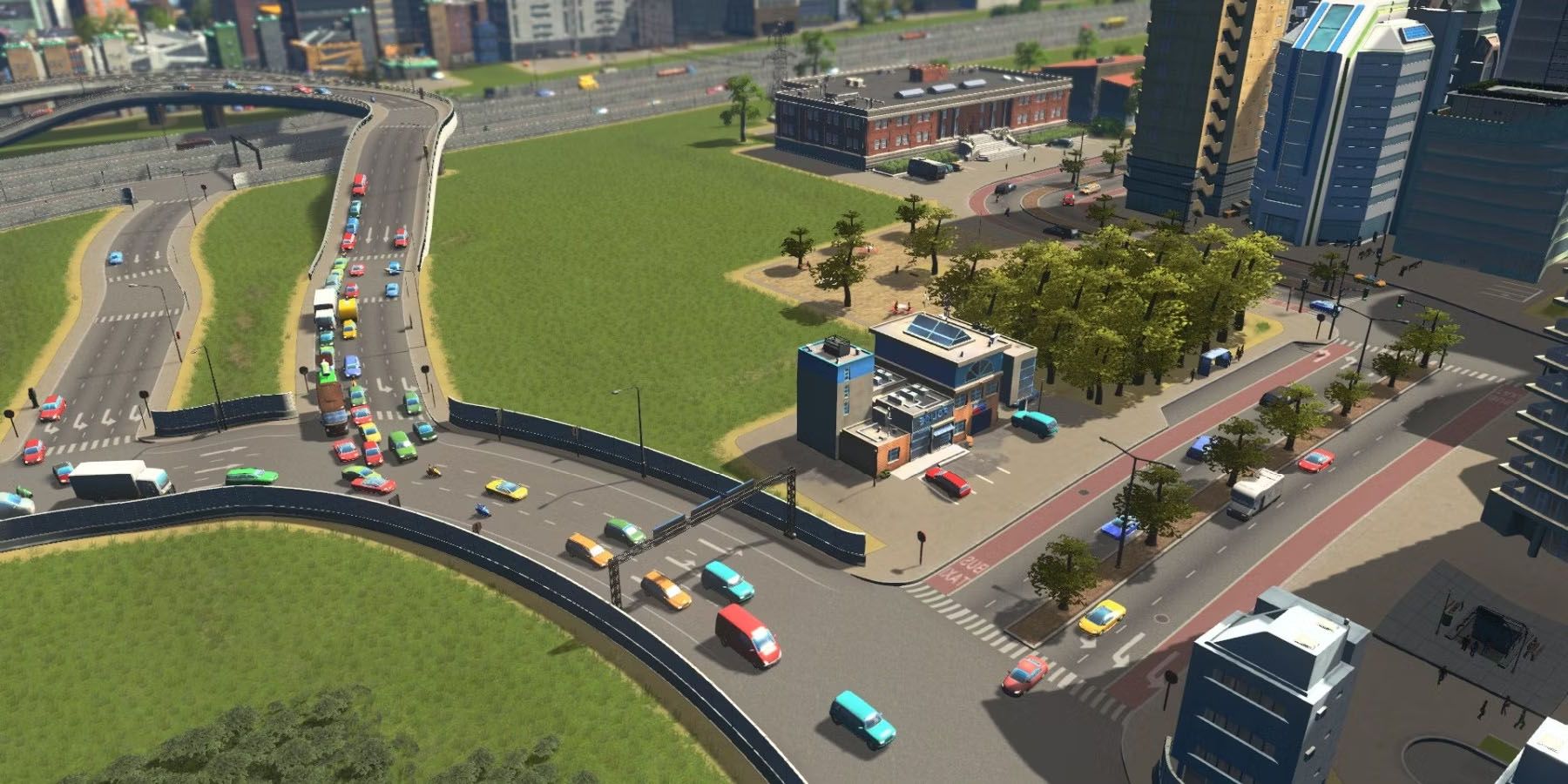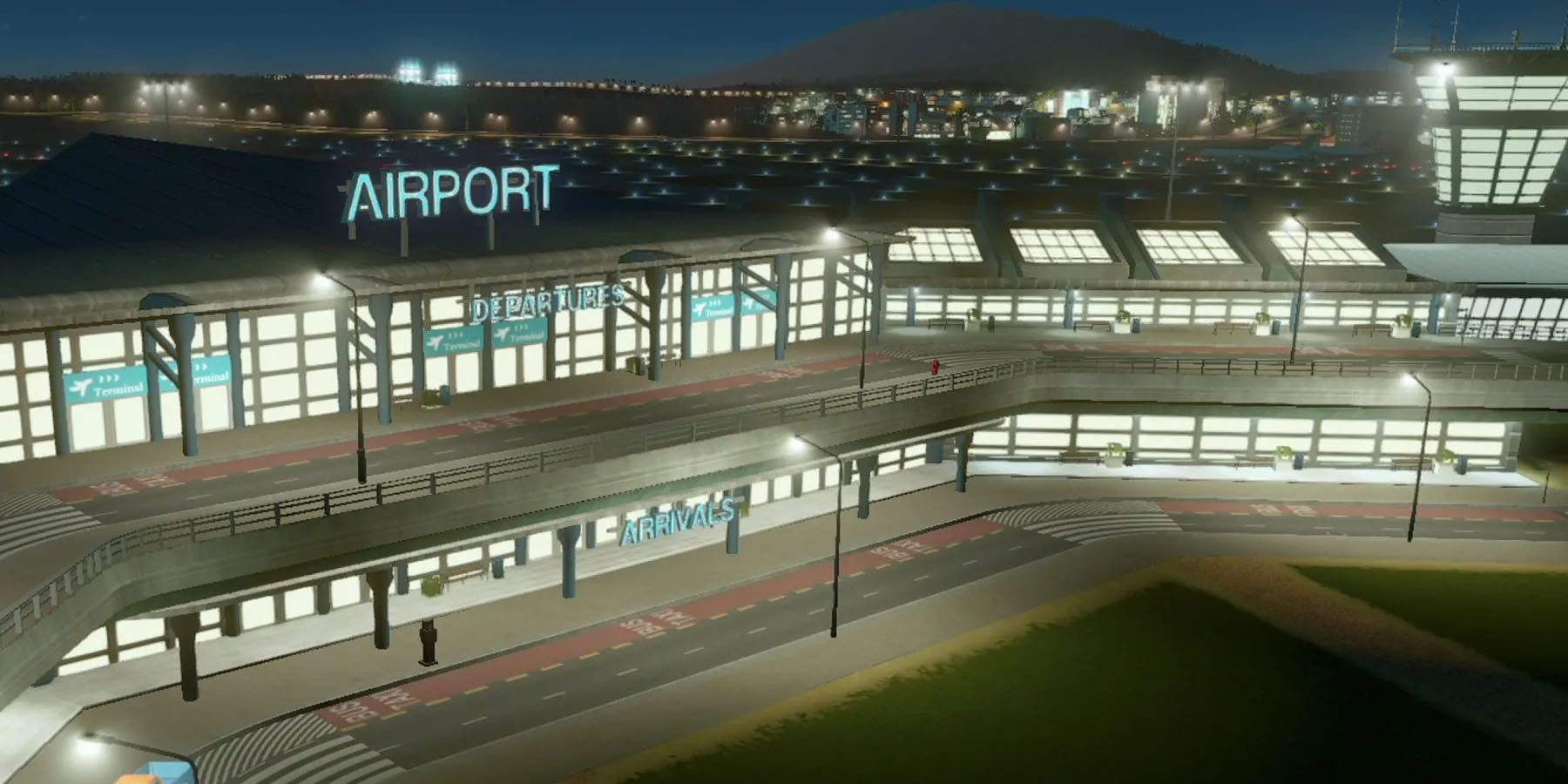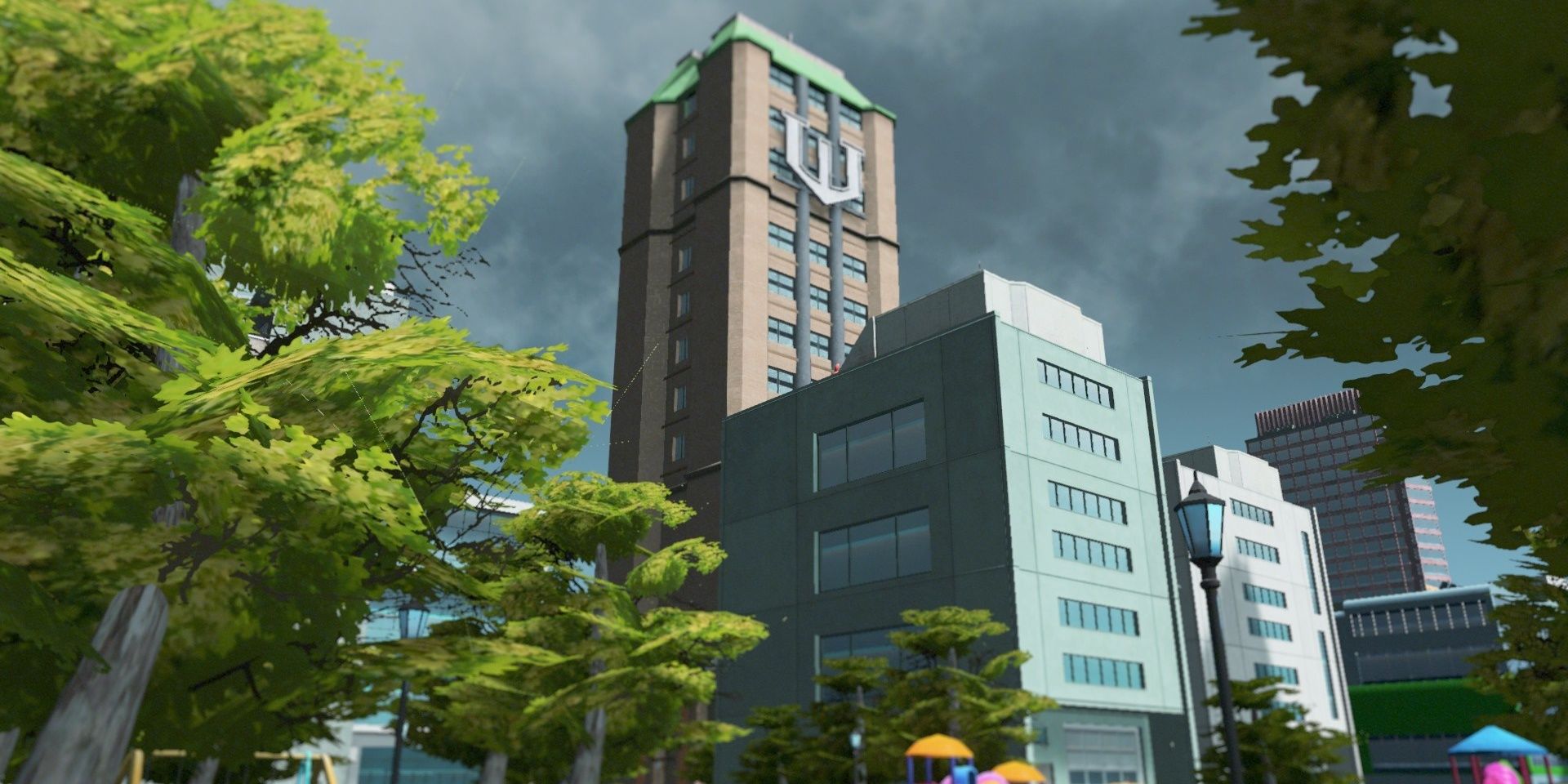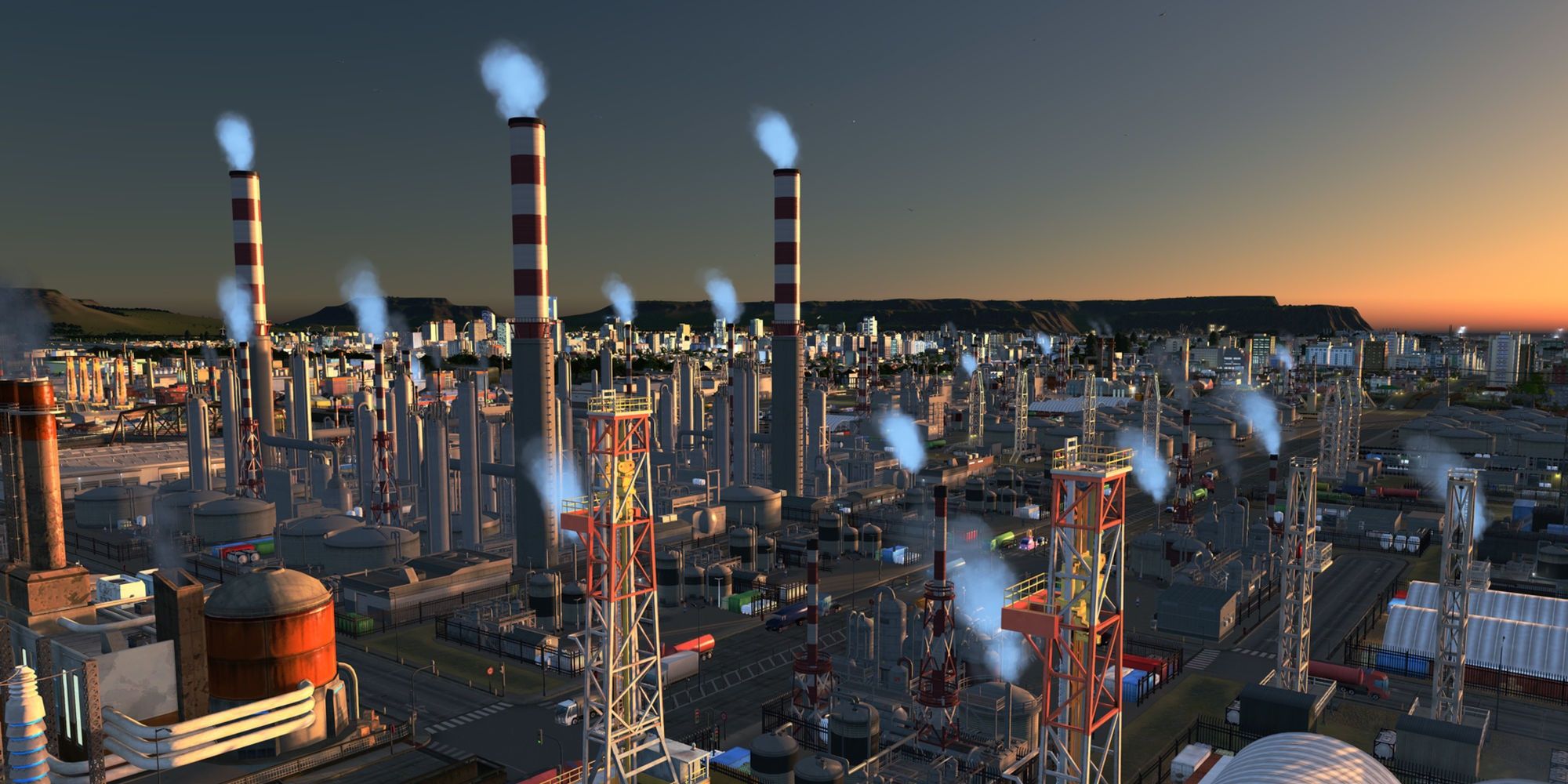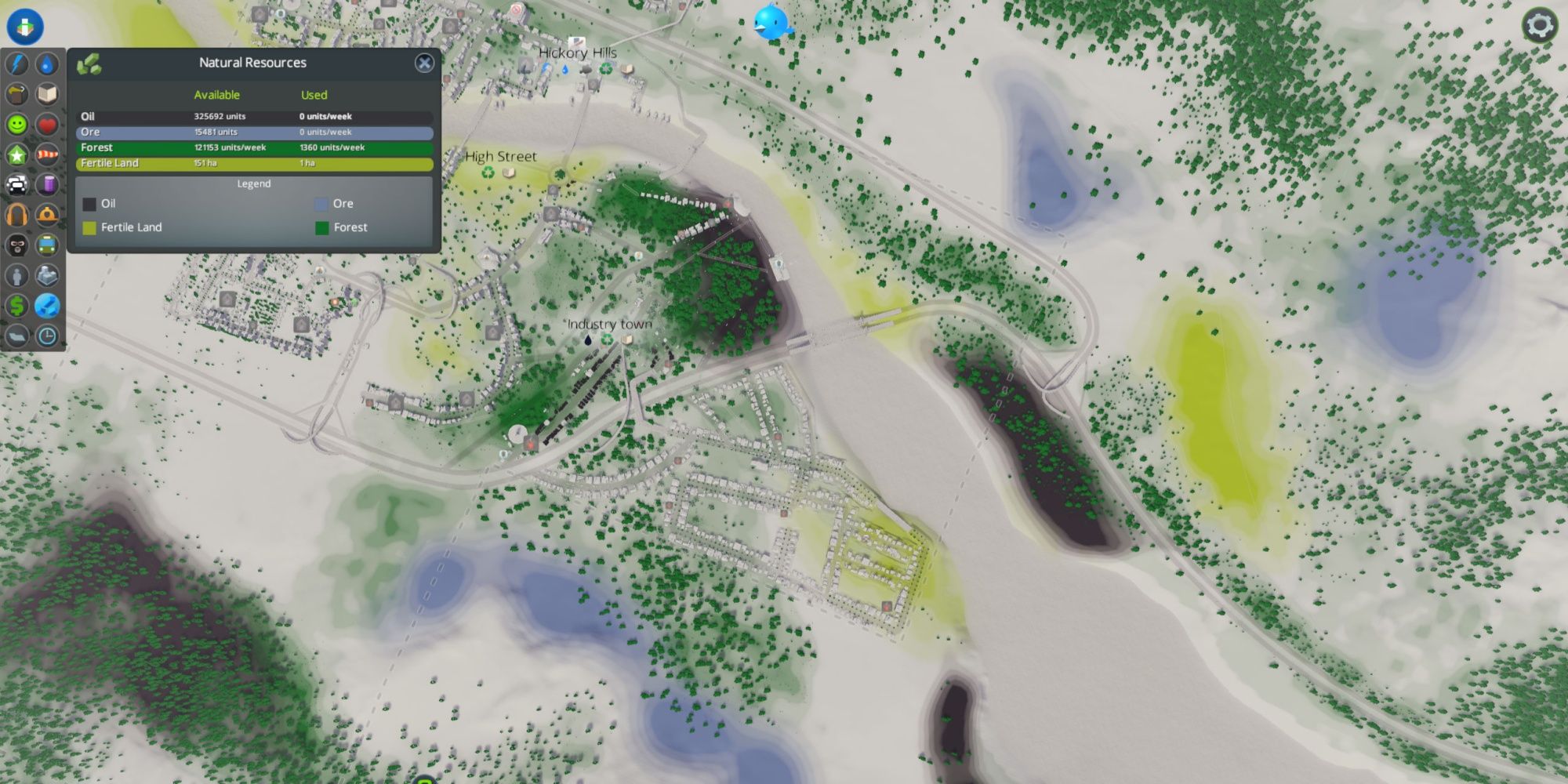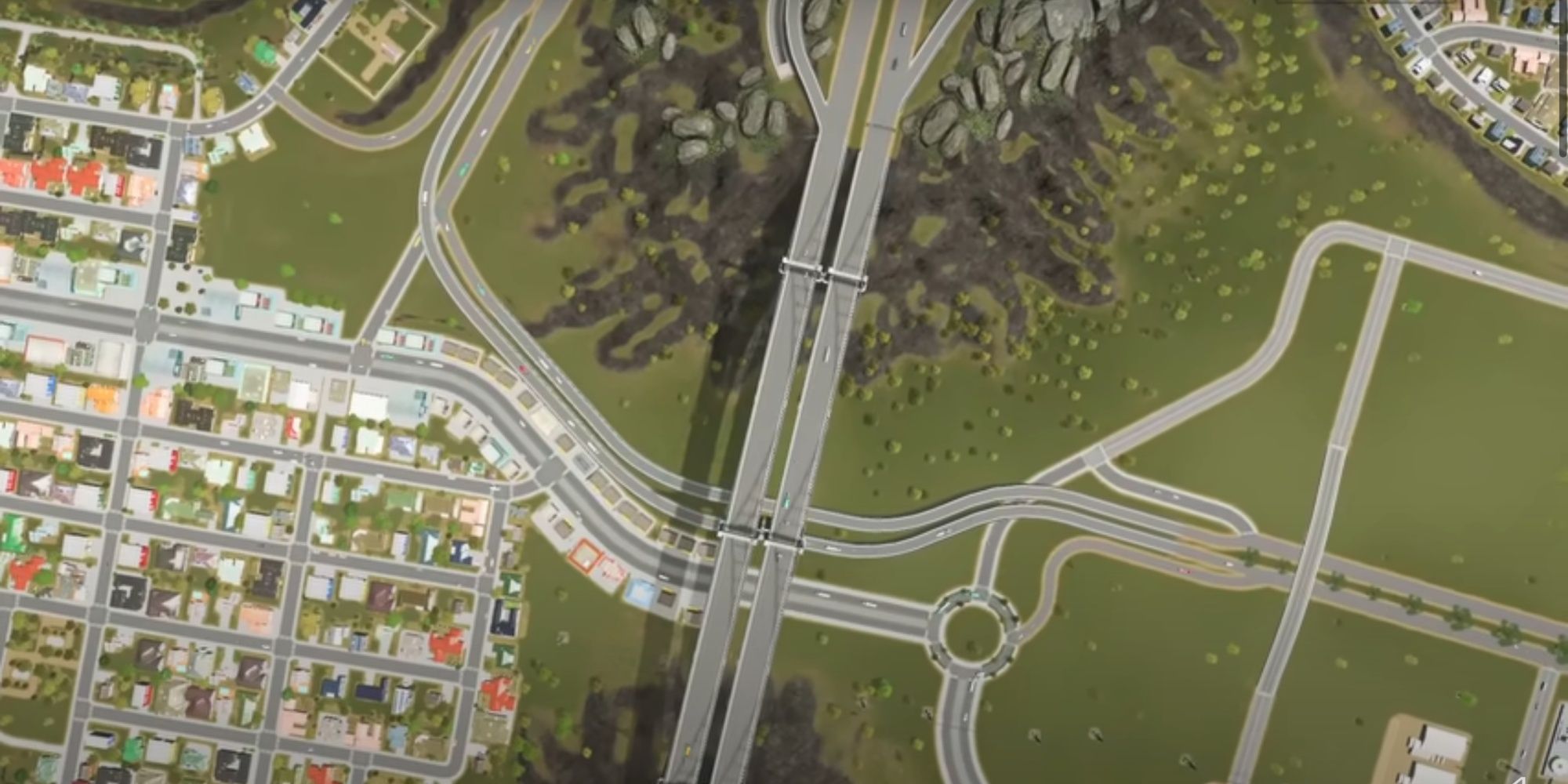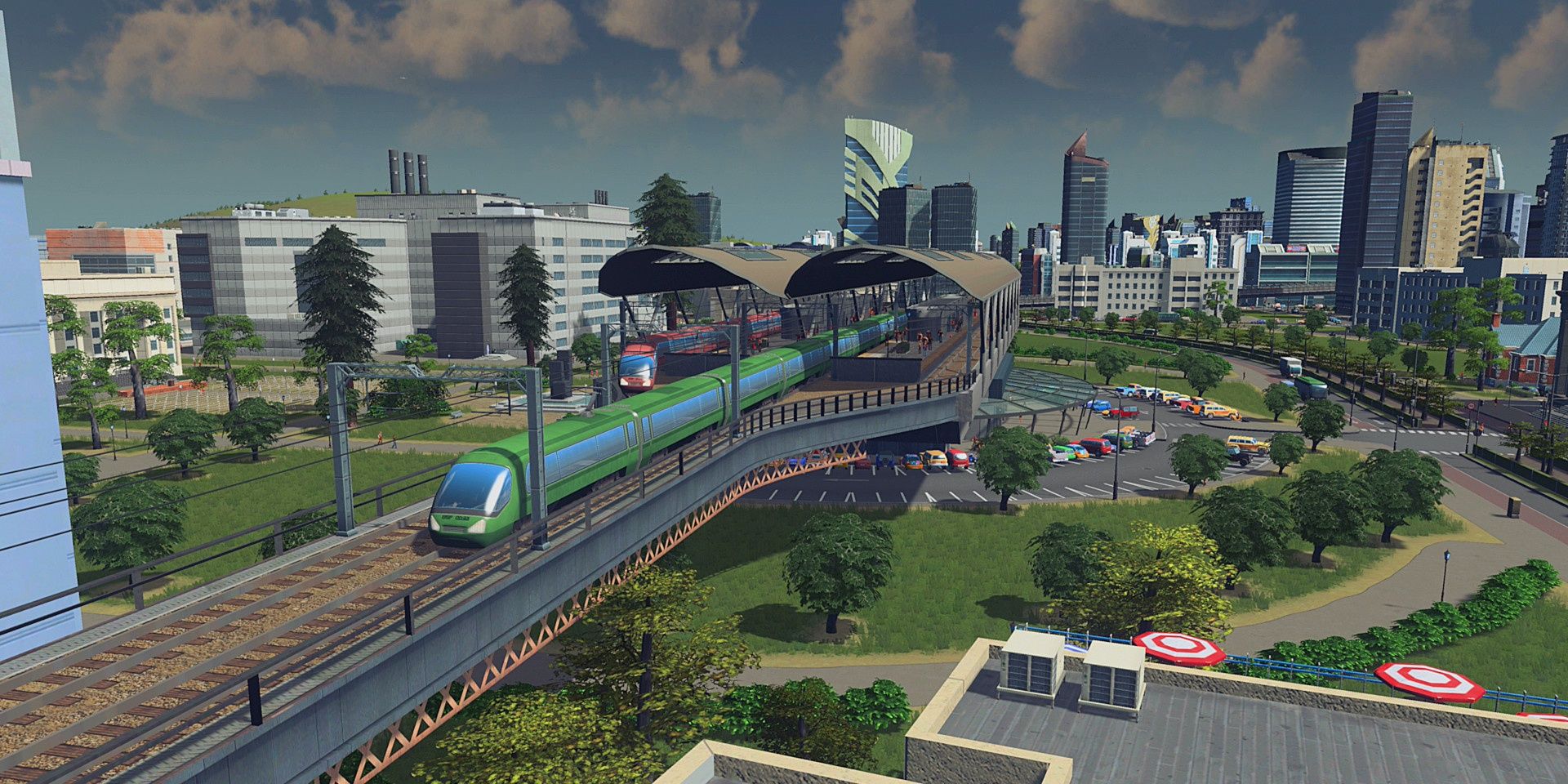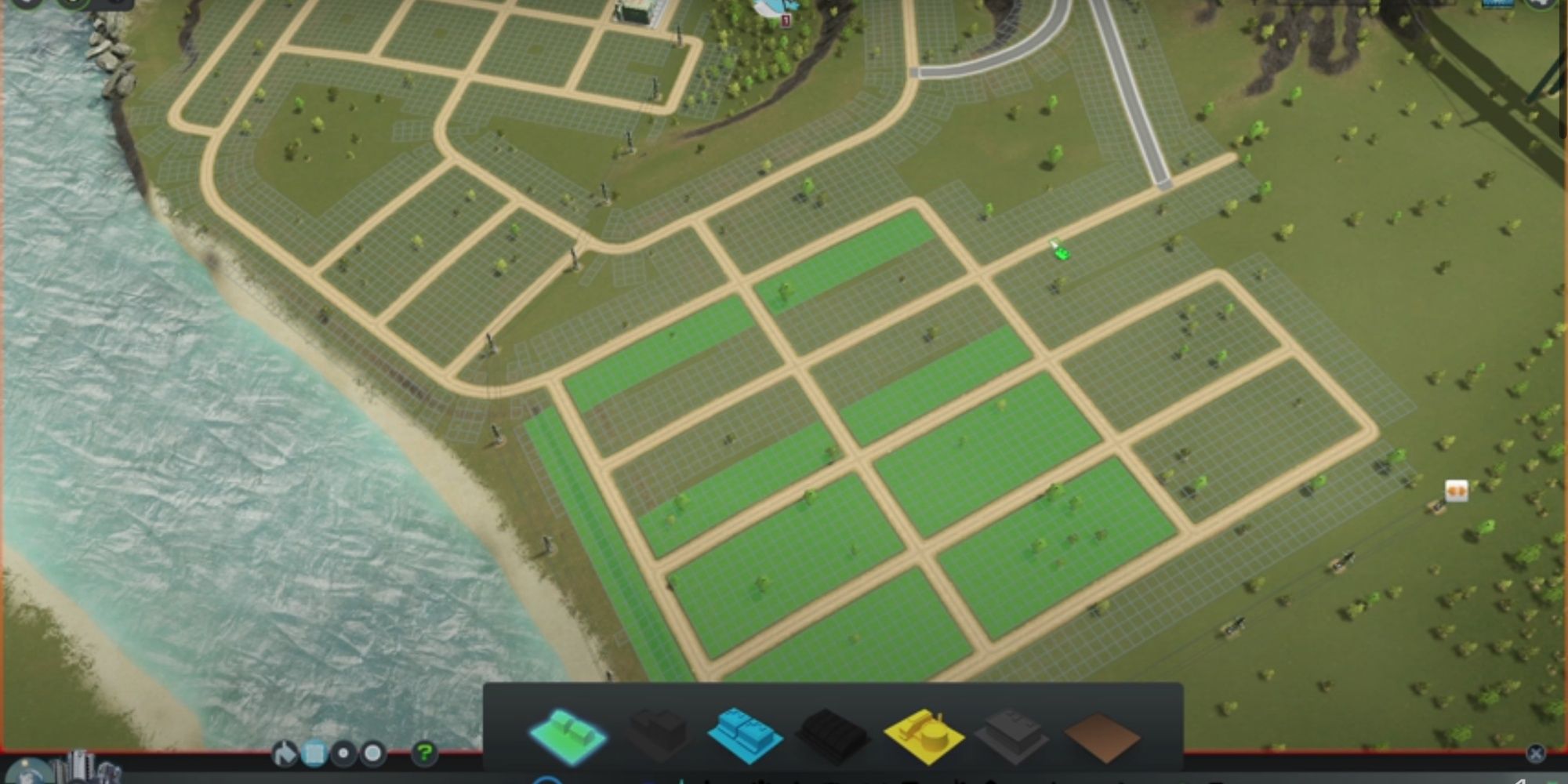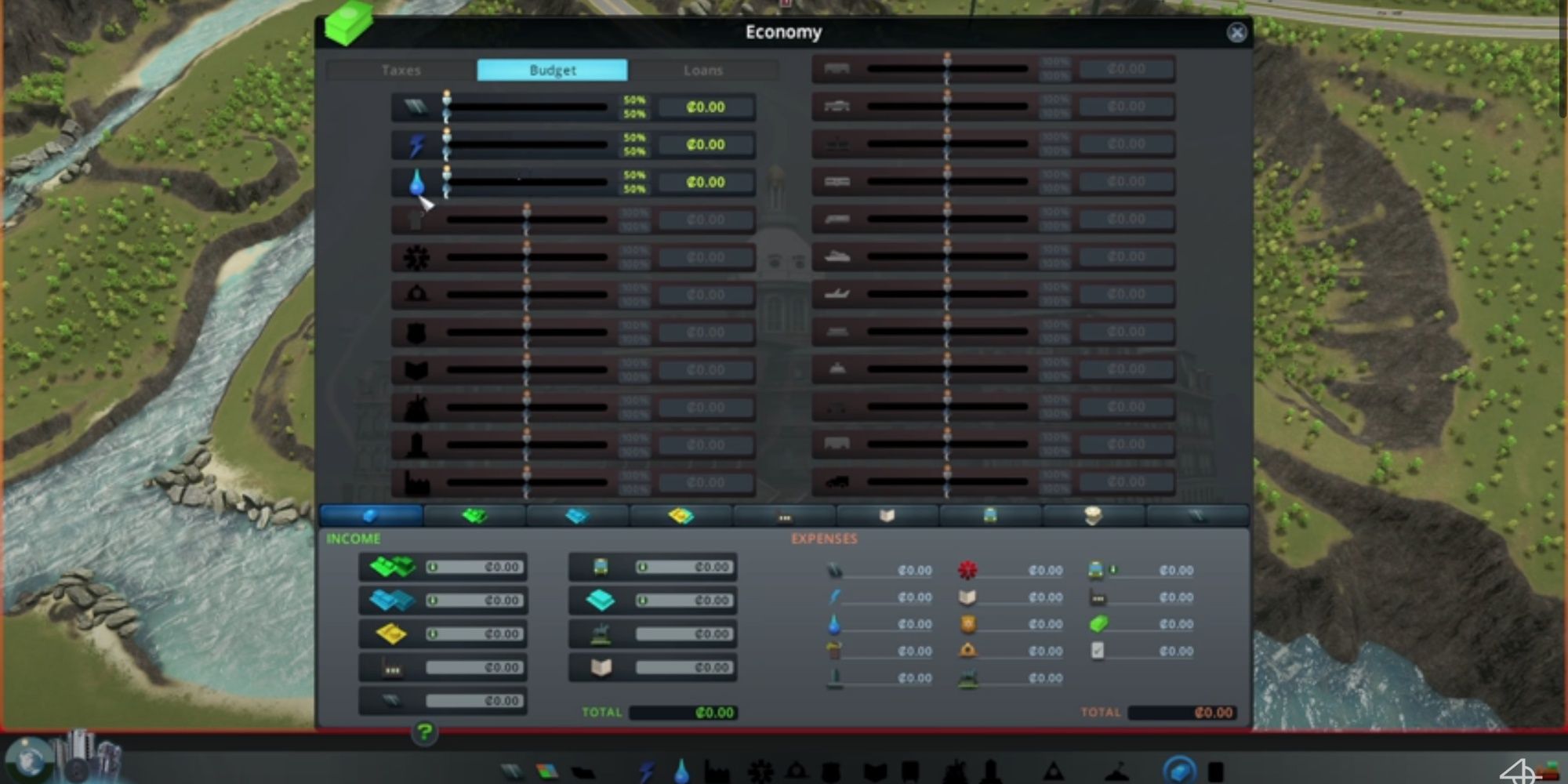Highlights
- Connect residential and commercial zones with pathways to encourage walking and reduce traffic congestion.
- Space out zones for more versatility and green space in the city, especially with the Parklife DLC.
- Avoid clogging traffic by connecting stations, not tracks, to the starting track for efficient transit.
Cities: Skylines is one of the more popular city builders for fans of management and design, and for good reason. Hosting features as broad as road building and zoning, to mechanics as narrow as pathways, custom parks, and even having control over the architecture theme of their cities, it’s no surprise Cities: Skylines gets the player base that it does.
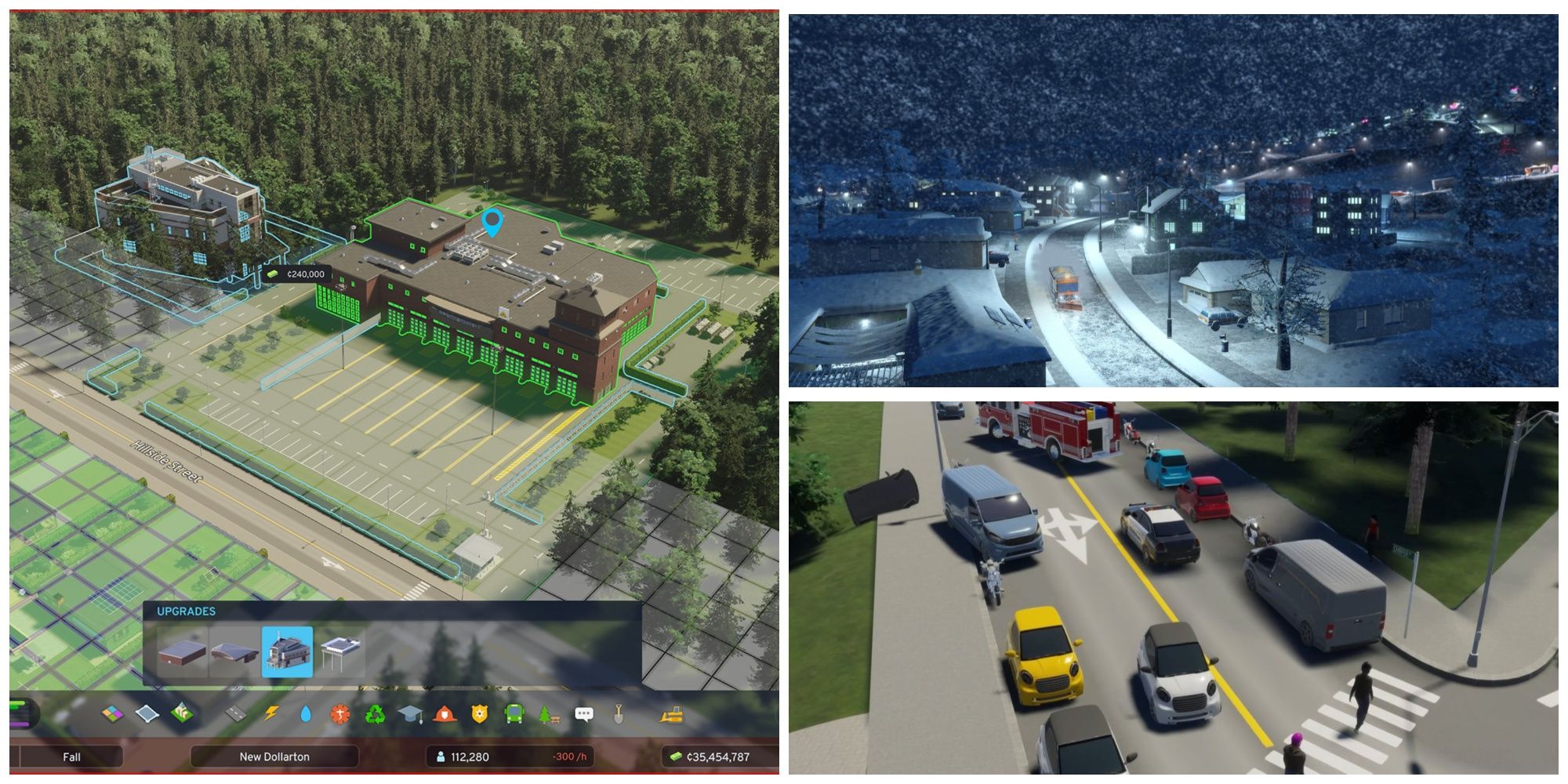
Cities: Skylines 2 – 6 Improvements Over The First Game
The original Cities: Skylines proved to be an excellent city-building game, but Cities: Skylines 2 features some major improvements.For players just starting out, however, the amount of control and impact they have over their city can be more than a little overwhelming. This is especially true if they wish to build a city outside of Sandbox mode, as costs can add up remarkably fast and make it impossible to move on if they don’t turn a profit quickly. Because of this, knowing a few tricks to make their city efficient as early as possible can go a long way to making sure new players can get on their feet.
Updated on April 24, 2024 by Rhenn Taguiam: While Cities: Skylines 2 had a rough start with performance issues and bugs since its 2023 release, the game’s launch for consoles in Spring 2024 would hopefully resolve much of these problems for fans of the city-building franchise. However, for fans who want to go back to a less turbulent time could always try Cities: Skylines for a more feature-complete experience. Beginners who feel overwhelmed about the game may want to implement best practices in the game to ensure they have a more enjoyable playthrough. These include prioritizing walking in between zones, distancing locations to avoid traffic congestion, staying clear from the main railway when creating tracks, and even bulldozing areas in worst-case scenarios.
1 Try To Connect Commercial To Residential Zones For Walking
Accessible Zones Can Make People Skip Public Transportation
|
Process |
Add Commercial Zones near Residential Zones to encourage walking |
|---|---|
|
Effect |
This skips the need to drive to locations as needs are already accessible |
The existence of different Zones in Cities: Skylines can motivate players to group clusters together so everyone is neatly placed according to categories. However, while this can work in a factory sim, having to manage a population means it’s detrimental for the city-builder to have Residential Zones so far away from a regularly visited location such as Commercial Zones.
Players can simply add Commerical Zones between Residential Zone clusters or even cornerstones within neighbourhoods to avoid this predicament. This way, people are encouraged to walk towards these shops instead of taking the car or public transportation. Visually, seeing vibrant commercial buildings coexisting with simpler homes can add a flair of “disorganized realism” to a city.
2 Appreciate The White Space (Parklife DLC)
Feel Free To Space Things Out For More Versatility
|
Process |
Space things out when expanding Zones |
|---|---|
|
Effect |
This gives room for extra transportation methods, walkable roads, and white space with greeneries |
Even some of the world’s best cities don’t follow an extremely ordered layout for all of their districts, which adds a layer of developmental realism to their appearances. When applied to Cities: Skylines gameplay on a technical level, this is often associated with spreading out Zone development across vast regions even if it means having “white space” with forests and greeneries between locations.
However, just because areas in the city-building game aren’t “full” doesn’t mean they’re underdeveloped. For instance, having large “blank” areas in between Zones could be dedicated to bypass zones, railways, and even parks for extra green space. In updates like Parklife, areas for parks and similar recreational locations can add benefits to the overall temperament of citizens.
3 Attach Stations, Not Tracks, To The Starting Track
This Helps Avoid Clogging Traffic
|
Process |
Connect Stations to the pre-existing starting track instead of simply dragging main tracks to them |
|---|---|
|
Effect |
This avoids the problem of clogging transits, especially since the pre-existing tracks are dedicated to incoming tourists |
Trains can dramatically improve the traffic efficiency of a player’s Cities: Skylines playthrough, making it tempting to switch the city’s main public transportation tracks to the pre-existing track that comes with the city. However, players should avoid this in the city builder game, mainly because the pre-existing track attracts incoming tourists and cannot be controlled by external factors.
If players connect their major lines to this pre-existing track, it will likely clog their entire traffic system. Instead, players may want to attach stations to the original track with “Allow intercity trains” activated in the settings. This helps tourists make more efficient exits across the city, and trains can skip the station if tourists don’t plan on making stops there.
4 Bulldoze When There’s No Way Out
Short-Term Impact A Necessary Risk For Management
|
Process |
Bulldoze irreparable parts of a city |
|---|---|
|
Effect |
This avoids unnecessary spending and time wasted in the long term |
While a bulldoze tool is technically available in Cities: Skylines gameplay to allow players to remove entire parts of a settlement in the city-builder, players may feel invested in their existing city to even consider using it far into a playthrough. This is especially the case when the city in question is already deep into its development cycle. In these stages, an “error” in one part of the city could be solved by simply building around it.
Although this option is technically available for players, it can waste time and valuable resources to “correct” a problematic part of the city. If players feel like a part of a city is becoming too much of a drag for their efficiency, it’s technically possible to start that segment from scratch by bulldozing them. Granted, this part of the city will likely cause problems for the overall functionalities of the city as a whole. However, this problem becomes a short-term issue should players manage to build the bulldozed part of the city in exactly the way they wanted to, instead of building around it with a bandaid solution.
5 Spread Zones When Planning
Skip Traffic Congestion With Spread-Out City Segments
|
Process |
Separate the same Zones from each other during city expansion |
|---|---|
|
Effect |
Avoids congesting traffic towards relevant Zones |
Players who want to approach their city-building experience more practically should consider spreading their Zones' frequency across different areas. While the game seems to imply that it’s more useful to keep clusters of the same Zones together, grouping different types of Zones might be more practical for players of Cities: Skylines in the long run. This is because certain Zones also have particular traffic demands.
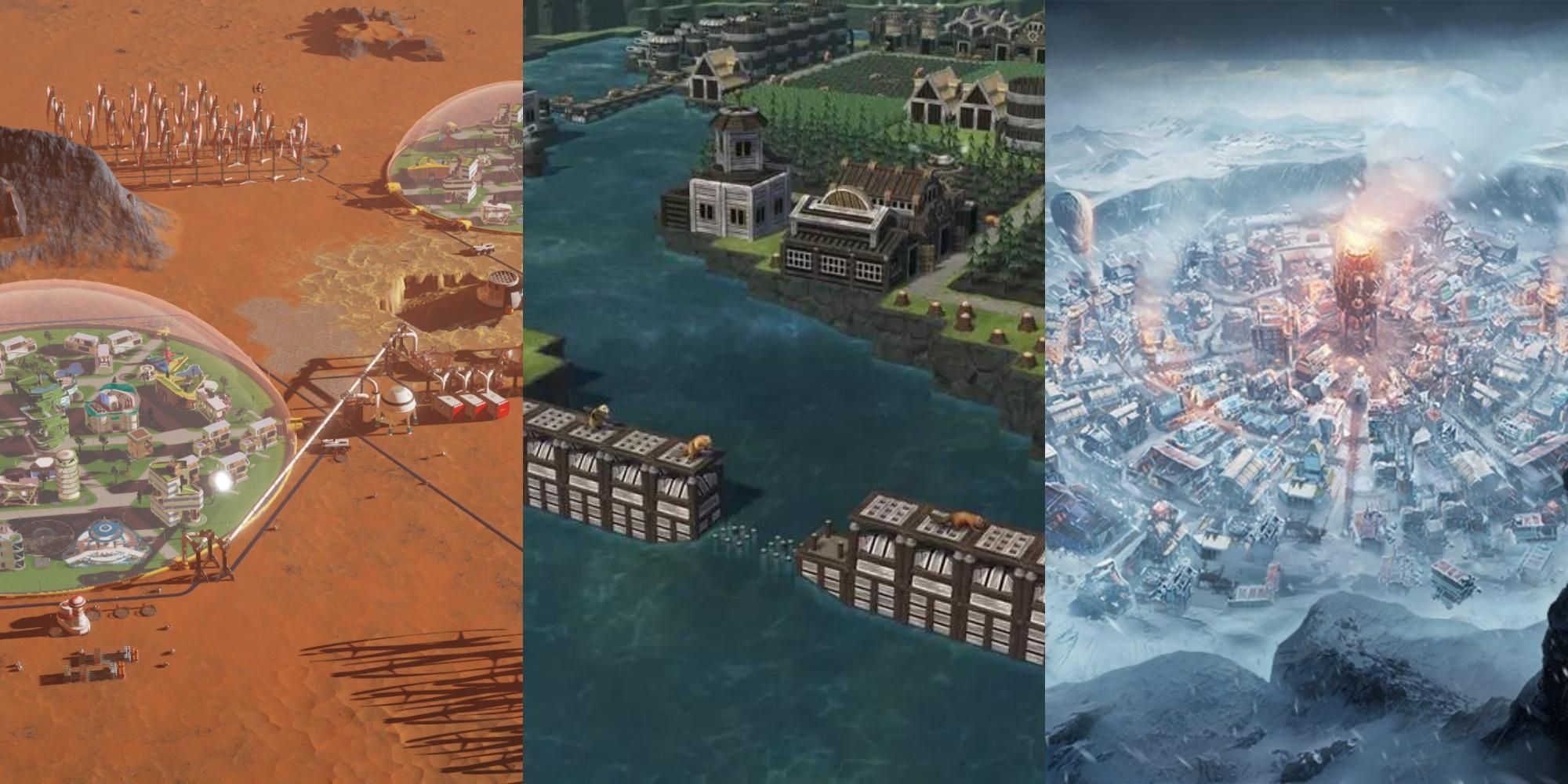
11 Most Complex City Building Games
While players love the relaxing yet challenging game genre of city builders, there are some that have the most complex system and worlds.For instance, grouping all Industrial Zones in a single area means focusing all traffic to these Zones within a single route. This can be a nightmare for large cities and cause significant delays in the flow of supply and demand. An alternative option for players would be separating Industrial Zones into “pockets,” which they can then place close to Commercial Zones and other city features to mitigate pollution levels.
6 Stick To Grids
Grids Make Services Easier To Control
| Process | Stick to grid roads when dealing with city centers |
|---|---|
| Effect | Services become faster to reach |
Thanks to the versatility of Cities: Skylines gameplay, players can enjoy creating complex road networks that replicate traffic in real-life cities. However, players trying Cities: Skylines for the first time may want to stick to grid-based road building, especially when it comes to basic transportation.
The game is still programmed to help cars travel the fastest with the basic square layout, making it the most optimal way of transporting not just people but services around the city. In turn, grid-like road setups become more ideal closer to the city center and areas where services are likely to be found, guaranteeing access to needs and commodities that can maintain citizen satisfaction.
7 Pause To Plan
Take As Much Time Before Starting The Game
| Process | Pause the game to plan the basic layout of the city |
|---|---|
| Effect | This makes the first parts of the ready for citizens without them rushing the player for services |
While it’s exciting to see citizens start popping up and setting up their houses in the player’s first few Residential Zones, they may start getting overwhelmed when citizens start demanding services players have yet to set up. Relenting to this panic may have players slip up and haphazardly build various Zones in unideal places, where removing and renovating these locations later on can prove dangerous to a city’s overall layout.
To avoid this long-term disaster, players should pause the game at the very start of their playthrough. That way, they can start laying out the basic plan of their small city and avoid bankrupting their treasury. Players do need to stay wary of their depleting funds, as keeping the game paused won’t collect taxes and funds from citizens who move in. With the right planning, players can at least have a gist of how large of a town they want to work with before expanding.
8 Water Is Powerful
Take Advantage Of Minimum Supply, Demand
| Process | Set Water to 50% Cost, 25% Service, and increase as Demand rises, only to build more Towers and Pipes at 100% Demand |
|---|---|
| Effect | This can save up budget while coping with increasing demand |
As with other city simulations, Cities: Skylines sessions also rely on how players secure an abundant supply of Water and Power to ensure their city’s survival. However, while it’s always safe to provide cities with multiple Water Towers and Water Pumping Stations, players shouldn’t get overboard and waste their budget with the prospect of over-supplying their citizens. In fact, small-scale cities should likely survive with a single Water Tower and Water Pumping Station pair.
A good rule of thumb for newcomers to Cities: Skylines is to set their Water to 50% Cost so it only provides 25% Service. Players should only increase the budget in the upsurge of demand, and only create more Towers and Pipes as soon as they reach 100% Demand. Even then, players should still opt for the 50/25-and-up whenever they expand, and only stop once they feel they have a large enough city.
9 Farming, Forestry Industries Make Good Buffer Zones
Commercial Zones Are More Tolerable Of Pollution
| Process | Place Farming and Forestry Industry Zones in between Commercial Zones and other Industrial Zones |
|---|---|
| Effect | Less risk of alienating and annoying Residential Zones when building crucial Industry Zones |
When players start expanding their Cities: Skylines city, they may end up having trouble placing their Industries as these income generators also tend to produce Pollution that can greatly affect Land Value and Citizen Happiness. However, should players think there’s no choice but to place an Industry Zone beside a Commercial or Residential Zone, they should consider creating either a Farming Industry or a Forestry Industry.
At its core, both Industry types only produce Noise Pollution and may not need the Natural Resources associated with them, courtesy of importation. In turn, these Industry types become ideal “buffers” between more hardcore Industry Zones and busier Commercial Zones. Instead of placing Farming/Forestry areas near Residential Zones, they’re best placed beside Commercial Zones as the latter are more tolerable of the Noise Pollution these Industry areas produce.
10 Always Start Small
Build Towards A More Manageable Area
| Process | Start with an enclosed, small space when creating a city |
|---|---|
| Effect | This secures the sustainability of a whole area before expanding into new locations in the city |
While players who look at their Cities: Skylines playthrough may realize just how large the game’s maps are, newcomers should remember that they’re not pressured to fill in all these areas as soon as possible. Granted, sprawling cityscapes where each area has a purpose look awesome from above, but a realistic city doesn’t always start with its long-term vision planned down to a tee.
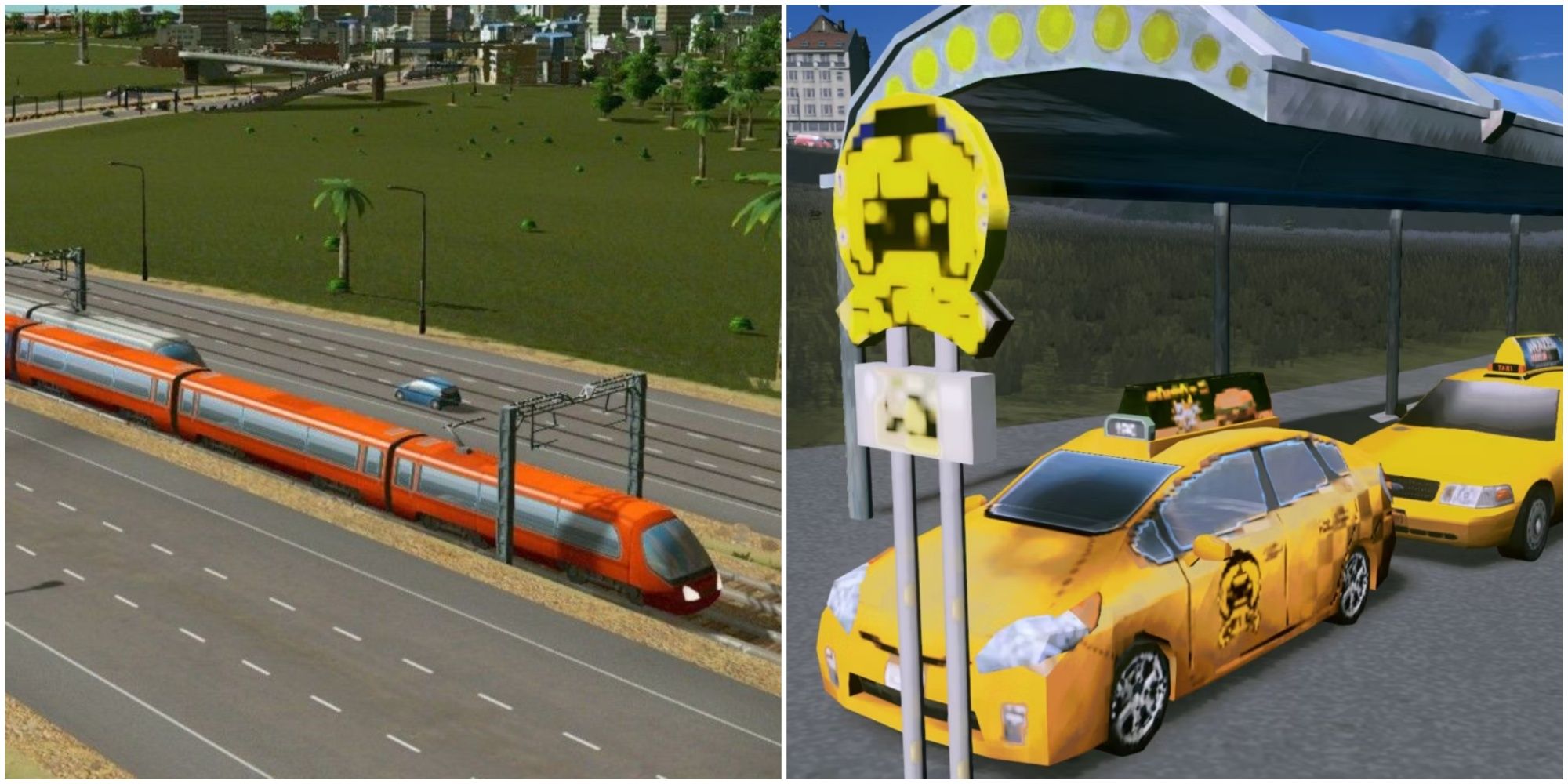
Cities: Skylines 2 – Best Public Transport
Public transport systems are needed for a Cities: Skylines 2 city to thrive. Here are the best ones players should consider building.In that regard, newcomers may want to start their city small and ensure a city pocket is functioning perfectly before trying to expand. That way, players have much tighter control of all aspects of a city and remedy inconveniences before they bubble into catastrophic mistakes. While the endgame vision of the city may seem messy, players can look at any area in their location and understand exactly how they work with the rest of the map.
11 Use Real Life Inspirations
Capitalize On How Real Cities Thrive
| Process | Study certain parts of a favorite city to see how they can be applied to the game |
|---|---|
| Effect | Aside from paving the way to more efficient cities, trying to replicate a city’s structure may reveal why certain aspects of it aren’t working in real life |
Players having a hard time pulling off their vision of an ideal city may want to try techniques that work in most cities. However, instead of looking at a gameplay guide, players may want to go local and look at real-life cities for inspiration. Remember, much of the mechanics of Cities: Skylines are based on how cities in the real world work.
For instance, players who choose a desert map may want to look at Dubai for inspiration, whereas Rio fits a more tropical setting. Likewise, players can observe what makes certain functionalities in other cities ineffective and adjust their cities accordingly. For instance, Istanbul and Moscow are said to have some of the worst traffic in real-world cities, so players may want to study how to adjust their traffic mechanics and roadworks to avoid a similar encounter in their dream city.
12 Tackle One Problem At A Time
Trying To Tackle One Problem Usually Reveals A Root Source
| Process | Adjust city settings one at a time regardless of how it affects other problematic areas |
|---|---|
| Effect | Players who eventually tackle one problem at a time for a city may trace a root problem-maker they can adjust to avoid the same problem in the future |
Growing metropolises in Cities: Skylines will likely experience some problems sooner or later, such as city simulation traffic or lack of water and electricity in some areas. Unfortunately, some problems in the game have the chance of appearing simultaneously, and trying to solve everything as fast as possible only seems to worsen the situation.
When players encounter multiple problems at a time, the best way of tackling the problem is to solve it one at a time and adjust settings to the city regardless if they worsen the other problems that need to be solved. Players can continue this cycle until they notice some specific settings that are affecting multiple aspects of the city that they might not be noticing unless specifically checked.
13 Focus On Industries Based On Maps
Take Advantage Of Map Geometry
| Process | Assess a map’s geographical strengths and create industries for the city based on the assessment |
|---|---|
| Effect | This maximizes the city’s economy while minimizing risks with an inefficient industry |
When Cities: Skylines releases a DLC with a new gameplay mechanic, they often have maps released alongside them to spice up a gamer’s playthrough. However, one mechanic players can take advantage of in their Cities: Skylines gameplay is to use a map released with the DLC of the Industry they want to focus on. Chances are, these maps are built precisely to highlight the Industry that DLC introduces.
For instance, the Airports DLC comes with tropical Asanu Beach and the more temperate Hanami Bay, both of which have more stretches of plains perfect for creating Airports. Likewise, traffic-inclined Mass Transit DLC works well with Arid Plains, Regal Hills, and Seven Lakes. Using these maps to understand certain city mechanics can make them easier to apply in more random maps.
14 Don’t Be Afraid To Play With Mods
Keep Cities Fresh And Fun To Play With
| Process | Tinker with Steam Workshop mods for cities to give them the kind of look and feel players want |
|---|---|
| Effect | This maximizes fun and avoids making the game boring |
One of the many perks of Cities: Skylines is how thorough and vibrant its modding community is. Whether players are looking for more maps than the game provides by default, new community buildings, different vehicle and building styles, or even more creative tools for managing their roads, the modding community will have them covered.
People who are new or unfamiliar with modding need not worry, either, as the Steam Workshop makes finding, downloading, and using new mods incredibly easy and intuitive to navigate, even for people who have never modded before. Mods can completely change the experience and are a great way to keep Cities: Skylines feeling fresh.
15 Keep Industry Separate From Other Zones
Dedicated Locations Reduces The Risks Of Pollution And Traffic
| Process | Keep Industry Zones close to resources and away from Residential Zones |
|---|---|
| Effect | Isolating Industry Zones can avoid risks of Pollution and Traffic that can reduce overall satisfaction |
Industrial Zones, especially at the beginning of a new city, will produce pollution by default that reduces the quality of life for anyone living nearby. While it can be tempting to keep things closer together where players can see them all at once, keeping this sector apart from the others will help residents, as well as the player, when expanding later.
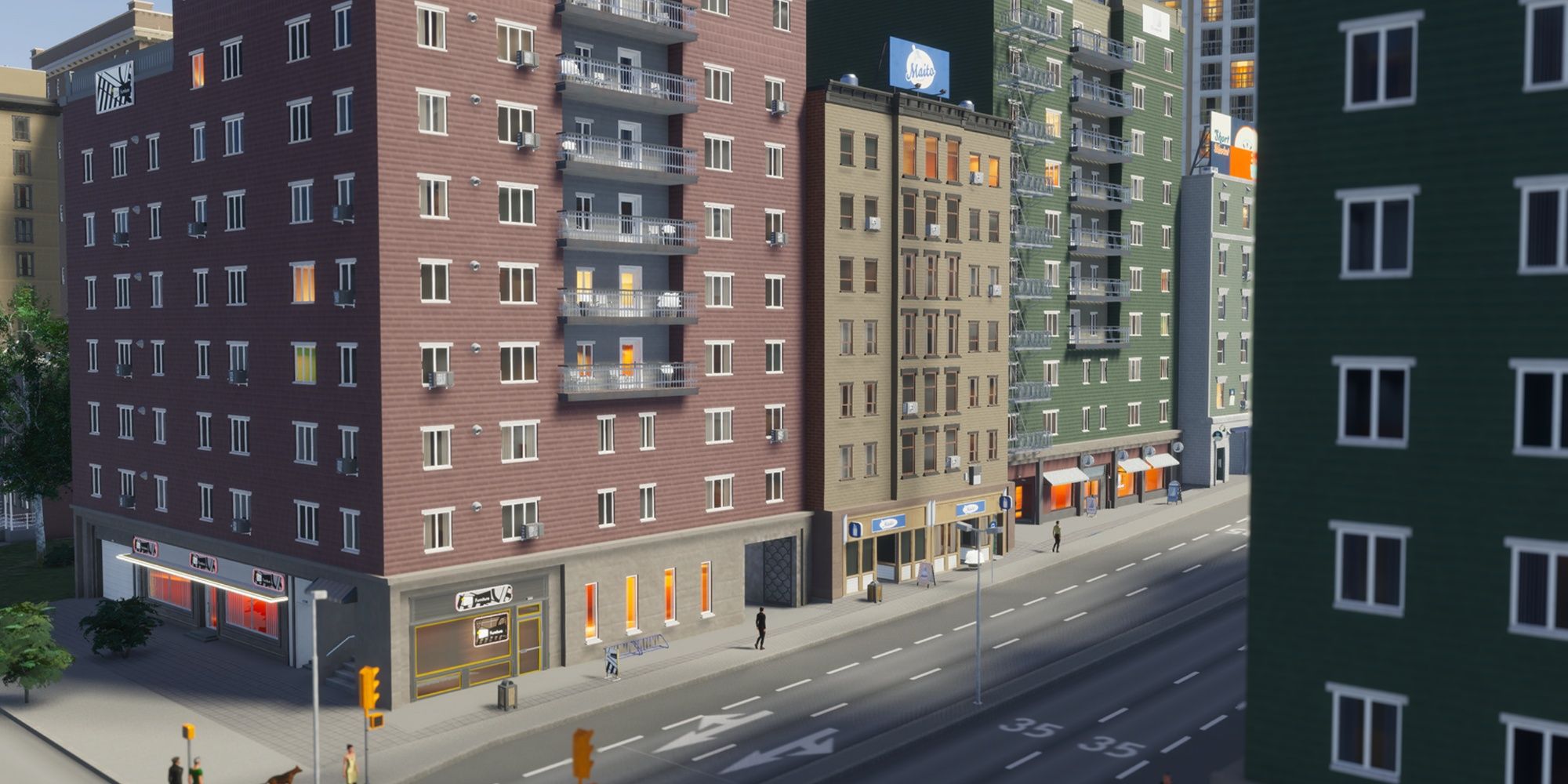
8 Beginner Tips For Cities: Skylines 2
These beginner tips will help players master their own creations in Cities: Skylines 2.Aside from keeping residents happy, this will also help reduce future traffic problems, as trucks will be less likely to pass through highly populated areas on their way to send exports out of the city.
16 Check Resources Early
Build The City Around Resource Areas
| Process | Build the city around accessible points such as Water, Energy, and other resources |
|---|---|
| Effect | While the initial layout can be chaotic, this ensures stability in the city |
A lesser-known feature for beginner Cities: Skylines players is the different resources that are spread across the map, which aren’t all visible without specifically checking.
Knowing where these are early on is essential for making sure the city develops efficiently, as it helps the player know where to put different sectors to get the most out of them once they’ve unlocked specialized industry districts. By checking early, players can make sure to set a valuable area aside to develop into a successful business once the time is right.
17 Plan The Layout Carefully
Planning Ahead Of Time Ensures Long-Term Stability
| Process | Try to plan locations of Zones early on by allotting space with roads, testing locations |
|---|---|
| Effect | This ensures players achieve their ideal city look while optimizing gameplay |
Once a city becomes more developed, it becomes exponentially harder to move things around if the original road system turns out to be impractical on a larger scale. Careful strategizing while designing the city to make sure there are different roads, blocks, and routes cars can take to get to the same districts is essential to have ahead of time. They’ll only become more important as the town gets more populated.
Preemptive measures can include planning main roads ahead of time, leaving room for different sectors to grow, and making sure buildings that cause a lot of vehicles to pause aren’t on any busy thoroughfares.
18 Prioritize Public Transit
Build Public Transportation To Mitigate Traffic
| Process | Build the city with public transportation in mind for easy access to various Zones |
|---|---|
| Effect | This can prevent larger population groups from blocking the driveway with cars and other large vehicles |
Ask any Cities: Skylines player what one of the biggest challenges in any of their cities is, and traffic is almost guaranteed to come up. Just like in real cities, the major roads in Cities: Skylines almost always become crowded and backed up with cars at some point, even in the most carefully planned layouts.
The longer it’s left unchecked, the harder it becomes to reroute the traffic. One way to mitigate this is by prioritizing bus routes, train stations, and other modes of public transportation early on in the city’s design, as it can dramatically reduce the number of cars on the road.
19 Plan For Road Upgrades
Spaces For Road Upgrades Avoids Ruining City Layouts
| Process | When constructing roads, consider if they will be upgraded in the future |
|---|---|
| Effect | This avoids having to demolish buildings that get in the way during inevitable upgrades |
It’s an inevitability in every city: eventually, the starter roads just won’t be large enough to manage the level of traffic the city now hosts. One of the first solutions to this issue is usually upgrading roads to a larger version with more lanes, allowing more cars to drive on them at once.
A great solution with one caveat, however: zoned buildings along that road will usually be demolished when it’s upgraded. In this case, it usually pays to think over which roads players will likely upgrade in the future, and leave those areas un-zoned to minimize disruption during future upgrades.
20 Lower Service Budgets At The Beginning
Slowly Raise Demand While Saving Money
| Process | Keep Services at 50% Supply and only increase as Demand rises |
|---|---|
| Effect | This ensures budget is maximized while still keeping the citizens satisfied |
At the beginning of every city, chances are the services in their current form (water, electricity, etc.) are way too powerful for the current scale of the town. As a result, more money ends up being spent at the beginning for a level of service that can’t be properly felt or appreciated by the city in its current state.

Cities: Skylines 2: The Best PC Builds
Cities: Skylines 2 happens to be one of the most demanding games, and these builds make sure it runs smoothly every session.Considering how little money players will have to spare while getting their city off the ground, it pays early to lower the budget down to 50% to save costs and slowly raise it as needed.

